

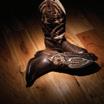



NOVEMBER/DECEMBER 2014 COMMONSENSE 1 VOLUME 21, ISSUE 6 NOVEMBER/DECEMBER 2014 THE NEWSLETTER OF THE AMERICAN ACADEMY OF EMERGENCY MEDICINE COMMONSENSE INSIDE President’s Message From the Editor’s Desk Washington Watch Foundation Donations AAEM News Upcoming Conferences YPS News AAEM/RSA News Job Bank WWW.AAEM.ORG SENSECOMMON 555 East Wells Street / Suite 1100 Milwaukee, WI 53202-3823 Pre-Sorted Standard Mail US Postage PAID Milwaukee, WI Permit No. 1310 FREE REGISTRATION FOR MEMBERS WITH REFUNDABLE DEPOSIT #AAEM15 21st ANNUAL SCIENTIFIC ASSEMBLY HILTON AUSTINAUSTIN, TX FEBRUARY 28 – MARCH 4, 2015 AUSTIN TEXAS Registration Now Open!
Officers President
Mark Reiter, MD MBA
Vice President
Kevin Rodgers, MD
Secretary-Treasurer
Joel Schofer, MD MBA CPE
Immediate Past President
William T. Durkin, Jr., MD MBA
Past Presidents Council Representative
Robert M. McNamara, MD
Board Of Directors
Kevin Beier, MD
John Christensen, MD
Mark Foppe, DO
David Lawhorn, MD
Andrew Mayer, MD
Robert E. Suter, DO MHA
Andy Walker, MD
Leslie Zun, MD MBA
YPS Director
Michael Ybarra, MD
AAEM/RSA President
Meaghan Mercer, DO
Editor, JEM
Ex-Officio Board Member
Stephen R. Hayden, MD
Executive Director
Kay Whalen, MBA CAE
Associate Executive Director
Janet Wilson, CAE
Common Sense Editors
Andy Walker, MD, Editor
Jonathan S. Jones, MD, Assistant Editor
Andrew Phillips, MD MEd, Resident Editor
Laura Burns, MA, Managing Editor
Table of Contents
Articles appearing in Common Sense are intended for the individual use of AAEM members. Opinions expressed are those of the authors and do not necessarily represent the official views of AAEM or AAEM/RSA. Articles may not be duplicated or distributed without the explicit permission of AAEM. Permission is granted in some instances in the interest of public education. Requests for reprints should be directed to AAEM, 555 East Wells Street, Suite 1100, Milwaukee, WI 53202, Tel: (800) 884-2236, Fax: (414) 276-3349, Email: info@aaem.org.
professional organization.
AAEM Mission Statement
The American Academy of Emergency Medicine (AAEM) is the specialty society of emergency medicine. AAEM is a democratic organization committed to the following principles:
1. Every individual should have unencumbered access to quality emergency care provided by a specialist in emergency medicine.
2. The practice of emergency medicine is best conducted by a specialist in emergency medicine.
3. A specialist in emergency medicine is a physician who has achieved, through personal dedication and sacrifice, certification by either the American Board of Emergency Medicine (ABEM) or the American Osteopathic Board of Emergency Medicine (AOBEM).
4. The personal and professional welfare of the individual specialist in emergency medicine is a primary concern to the AAEM.
5. The Academy supports fair and equitable practice environments necessary to allow the specialist in emergency medicine to deliver the highest quality of patient care. Such an environment includes provisions for due process and the absence of restrictive covenants.
6. The Academy supports residency programs and graduate medical education, which are essential to the continued enrichment of emergency medicine and to ensure a high quallity of care for the patients.
7. The Academy is committed to providing affordable high quality continuing medical education in emergency medicine for its members.
8. The Academy supports the establishment and recognition of emergency medicine internationally as an independent specialty and is committed to its role in the advancement of emergency medicine worldwide.
Membership Information
Fellow and Full Voting Member: $425 (Must be ABEM or AOBEM certified, or have recertified for 25 years or more in EM or Pediatric EM)
Affiliate Member: $365 (Non-voting status; must have been, but is no longer ABEM or AOBEM certified in EM)
Associate Member: $250 (Limited to graduates of an ACGME or AOA approved Emergency Medicine Program)
*Fellows-in-Training Member: $75 (Must be graduates of an ACGME or AOA approved EM Program and be enrolled in a fellowship)
Emeritus Member: $250 (Must be 65 years old and a full voting member in good standing for 3 years)
International Member: $150 (Non-voting status)
Resident Member: $60 (voting in AAEM/RSA elections only)
Transitional Member: $60 (voting in AAEM/RSA elections only)
International Resident Member: $30 (voting in AAEM/RSA elections only)
Student Member: $30 or $60 (voting in AAEM/RSA elections only)
International Student Member: $30 (voting in AAEM/RSA elections only)
*Fellows-in-Training membership includes Young Physicians Section (YPS) membership.
Pay dues online at www.aaem.org or send check or money order to: AAEM, 555 East Wells Street, Suite 1100, Milwaukee, WI 53202 Tel: (800) 884-2236, Fax (414) 276-3349, Email: info@aaem.org.
2 COMMONSENSE NOVEMBER/DECEMBER 2014
COMMONSENSE
AAEM is a non-profit,
Our mailing list is private. President’s Message......................................................................................................................... 3 From the Editor’s Desk 5 Letters to the Editor 7 Washington Watch 9 Foundation Donations 10 PAC Donations ................................................................................................................................ 11 Upcoming Conferences: Sponsored and Recommended 12 View from the Podium 13 AAEM News Dollars & Sense 16 Medical Liability and the Emergency Physician: The Final Summary.................................... 18 Eliminating Triage: Redesigning the Front End of the Brigham and Women’s Hospital ED 24 United States Department of Justice Settles Seven Whistleblower Lawsuits Brought Against Community Health Systems, Inc. for Over $98 Million 27 Through the Patient’s Eyes: What You Can’t See Will Often Hurt You 29 AAEM Offers New Level of Support to Independent Emergency Medicine Groups .............. 30 ABEM Election News 31 AAEM Fellow Awarded AOA Professionalism Award 33 AAEM Exhibits at the American Hospital Association Leadership Summit............................ 33 Call for Quality Standards Committee Members 34 Young Physicians Section News Save Any Lives Recently? A New Grad’s Reflection on the Words of the Wisest 36 AAEM/RSA News AAEM/RSA President’s Message ......................................................................................... 38 The Sculptor’s Compass — A Diagnostic Paradigm 39 Resident Journal Review: Updates in Prehospital Emergency Medical Service Care .......... 40 It’s a Privilege, Not a Burden 42 Medical Student Council President’s Message 44 Job Bank ......................................................................................................................................... 45
President’s Message Tenet Health Update & Opportunities with AAEM
Mark Reiter, MD MBA FAAEM AAEM President Tenet Health Update
I recently participated in several media interviews in which I raised AAEM’s concerns regarding Tenet Health’s plan to replace its independent emergency medicine, hospitalist, and anesthesiology groups in California with a national physician staffing company. AAEM feels this would be highly disruptive to those hospitals and could compromise quality of care. These media interviews had much exposure in the local press and helped Tenet and the community better understand our concerns. On September 5th, I participated in a conference call with Tenet Health leadership, an attorney for the Coalition for Quality Hospital Care, and California ACEP President Dr. Osmundson. During the call, Tenet’s leadership informed us they were no longer considering using one national physician staffing company for all of the involved California practices. In addition, Tenet committed to begin contract renewal negotiations with the independent emergency medicine groups staffing its California hospitals and to partner with them to achieve its goal of better coordinated care across services. We are encouraged by these positive developments. We will continue to work closely with the involved independent emergency medicine groups and monitor this evolving process.
During the call, a position supported by California ACEP — that it does not favor any physician group practice model over others — was erroneously attributed to AAEM as well in a follow-up letter from Tenet. AAEM has always endorsed practice models based on fairness, transparency,
financial equity, physician autonomy, and the best possible care of patients — qualities that we believe are exemplified by independent, local, democratic, physician-owned medical groups. AAEM responded with a follow-up letter to Tenet Health’s Western Region CEO, in order to clear up this misunderstanding (see below).
Opportunities with AAEM
We’re fast approaching time for AAEM elections. Nominations for elections and awards close December 1st. AAEM is committed to a democratic, transparent election process — any AAEM member can run for the board of directors, and board members are elected directly by our full voting members. My time on the AAEM board has been incredibly gratifying, and I highly encourage interested leaders to consider running for the board. In particular, I feel our board would be stronger if we had more representation from our female physicians and underrepresented minorities. We have many very effective female and minority physicians active within the Academy, but none ran for election last year. If you are interested in learning more about running for the board, feel free to contact me or any other board member.
We are also in the process of updating AAEM committees. We are looking for new blood — new committee members and new committee chairs. We recently put committee information on our website at: www.aaem.org/
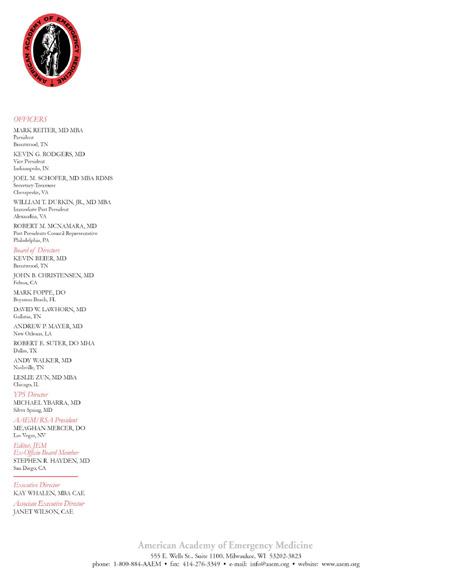
Continued on next page
emergency, hospitalist, and anesthesiology groups with a national physician staffing company. In light of your letter following the conference call, I would like to clarify the position of the American Acad emy of Emergency Medicine (AAEM) on different practice models in emergency medicine and correct the apparent misunderstanding that AAEM does not favor one over others. As is well known AAEM endorses practice models based on fairness, transparency, financia equity, physician autonomy, and the best possible care of patients – qualities that we believe are exemplified by independent, local, physicianowned medical groups.
I was happy to hear during the call that Tenet Health is pleased with the quality of care currently being delivered by the independent groups staff ing several of its emergency departments and is committed to retaining these physicians. was also pleased to hear that Tenet Health’s main goal s to improve coordination of its emergency medicine, hospitalist, and anesthesiology groups to maintain excellent care, and that decisions to replace existing groups would not be based primarily on Tenet’s financial bottom line It is encouraging that Tenet agrees here is significant potential for partnering with the existing independent groups to achieve greater coordination of care I have spoken with the leadership of several of the independent groups recently, and they are committed to working with Tenet on these efforts. It was good to hear that Tenet recognizes that using a single staffing corporation to staff all its emergency medicine, hospitalist, and anesthesiology services is unlikely to meet the unique needs of each of its hospitals. Finally, I was relieved to hear that Tenet understands the importance of listening to the medical staff at each of its hospitals, many of which have strong opinions about losing the medical groups currently providing such good care.
On the other hand, I was concerned to read in your September 5 letter to Dr. Osmundson, President of California ACEP, that “w e are encouraged that Cal-ACEP and AAEM are not taking a position on any specific model for the delivery of emergency services, and that your interest is in ensuring that the process involves the active participation and input of impacted physicians.” During a conferenc e call with many participants, it can be difficult to tell which person is making a particular statement, leading to misunderstanding. Although Dr. Osmundson did say that Cal-ACEP is not taking a position on any specific model of emergency medical practice, AAEM took the opposite position during the conference call and in our July 11 letter to you and others in Tenet Health's leadership. As I wrote above, AAEM always has and continues to support independent practices, and does not condone practice models we regard as unfair to physicians and dangerous for patients. AAEM endorses open, fair, democratic emergency medicine groups that are owned equitably by board-certified emergency physicians who are protected by due process and peer review.
AAEM is encouraged by Tenet Health’s willingness to discuss with its local, independent groups ways to work together to improve the coordination of its emergency medicine, hospitalist, and anesthesiology services. From our discussions with the independent emergency physician groups involved, AAEM is confident that Tenet Health will find them to be enthusiastic partners in this regard. AAEM believes that partnering with its existing, independent physician-owned groups is Tenet Health’s best option for preserving the high quality care being provided in its hospitals.
Sincerely,
 Mark Reiter, MD MBA FAAEM President, American Academy of Emergency Medicine
Mark Reiter, MD MBA FAAEM President, American Academy of Emergency Medicine

NOVEMBER/DECEMBER 2014 COMMONSENSE 3 PRESIDENT’S MESSAGE
September 9 2014 Mr. Jeff Koury, Western Region CEO Tenet Health 1445 Ross Avenue, Suite 1400 Dallas, TX 75202 Dear Mr. Koury, Thank you for your time on our September 5th conference call to discuss Tenet’s possible replacement of several of its
about-aaem/leadership/committees. Join a committee — it is a great way to play a larger role in our organization and interact with many of the top leaders in our field. New committees include the Women in Emergency Medicine Interest Group, the Minority Affairs Interest Group, and the AAEM Physician Group Task Force.
There are lots of other opportunities. AAEM members interested in publishing can contribute to our newsletter Common Sense, the Journal of Emergency Medicine, as well as AAEM collaborations with PEPID and Medscape. There are speaking opportunities at the AAEM Scientific Assembly and other AAEM-sponsored conferences. Several of our AAEM committees are releasing regular podcasts and are looking for
contributors. And, we are always looking for volunteers for our popular AAEM Oral Board courses, which take place twice a year in Chicago, Dallas, Las Vegas, Los Angeles, Orlando, and Philadelphia.
As a member-driven organization, the Academy is always looking for more ways to serve its membership. If you have an idea for a new initiative, let us know. ■
Mark Reiter, MD MBA FAAEM President, American Academy of Emergency Medicine
AAEM Submits Written Testimony on Ebola Outbreak to House Subcommittee
Written Testimony of Mark Reiter, MD MBA FAAEM, president, American Academy of Emergency Medicine submitted for the record to U.S. House Energy and Commerce Subcommittee on Oversight and Investigations, October 16, 2014.
Chairman Murphy, Ranking Member DeGette and members of the Committee, thank you for the opportunity to provide comments on your hearing focusing on the Ebola outbreak and efforts by the U.S. Government and our healthcare system to identify, treat, and protect the public health from this infectious disease.
The American Academy of Emergency Medicine (AAEM) is the specialty society of board certified emergency physicians, representing 8,000 members across the country. Whether it is an athlete suffering from a broken bone, an infant struggling to breathe, a victim struggling to survive a gunshot wound, or a patient dealing with debilitating symptoms from an infectious disease, our emergency physicians serve on the front lines everyday combating life threating conditions. Our emergency physicians, nurses, and medical support teams provide this type of care in often overcrowded, underfunded, and overburdened systems. A typical emergency department (ED) could see 100 patients a day while a more populated one could see 300. According to the CDC, in 2010 the number of visits to an ED was 129.8 million. This number continues to increase. Despite the well-intended efforts of the Affordable Care Act to direct noncritical and non-emergency patients to primary care providers, Americans frequently still choose EDs as their first option for care. EDs are, in particular, a first point of care for many immigrants and travelers who seek treatment in the United States.
Like many Americans, we are saddened by the toll Ebola has taken on the lives of many in West Africa and other countries and now the United States. We share in the concern for our fellow caregivers who appear to have contracted the disease from their efforts to save a now deceased patient. We are proud of our physician colleagues who are battling against Ebola in West Africa under challenging conditions in an effort to save lives and prevent further infections. Unfortunately, this disease poses significant challenges not only to the global health system but to our health system as evidenced recently in Texas, Georgia, and Nebraska.
In the case of Ebola or any other infectious disease like EVD-68, it is critically important that our health system provide emergency physicians and the critical care community with the resources, protocols, best evidenced-based practices, and expert personnel needed to diagnosis, treat the sick and protect our care-givers and the public from further harm. First, given its recent introduction to the United States, new protocols and best practices to identify and treat Ebola are still being learned “on the job” and will need further education and clarification. Secondly, some EDs do not have sufficient isolation rooms to deal with infectious disease patients given the limited space they already have to treat more common emergency cases. Thirdly, policy makers must understand EDs are often understaffed and overwhelmed, so staff must continue to treat the life threatening conditions facing other ED patients while treating an Ebola patient. If an ED had to partially or temporarily shut down due to limitations in staffing capacity to treat an Ebola patient, there could be serious health consequences for other emergency patients in the community.
Congress working with HHS, CDC, NIH, the FDA, and other public health agencies could play a critical role in helping to combat the further spread of Ebola. We understand that Congress may for example consider increased funding to help the U.S. health system better prepare and prevent the spread of Ebola. If so, we would encourage policy makers to ensure resources are prioritized to EDs and critical care facilities who are in need of training, protective gear and most importantly, additional expert medical personnel in the event of an Ebola diagnosis. Furthermore, while some hospitals may be better prepared to treat Ebola patients, others may simply lack the personnel and resources and need additional support to transition care to a more appropriate treatment facility or “dedicated hospital.”
AAEM stands ready to work with Congress and public health departments to ensure our health system is prepared to meet the challenges and risks posed by Ebola and other infectious diseases. We look forward to serving as a resource to your Committee as you seek ways to better protect the public from Ebola and ultimately, eradicate this deadly disease. ■
4 COMMONSENSE NOVEMBER/DECEMBER 2014 PRESIDENT’S MESSAGE
Ave Atque Vale

















































































 Andy Walker, MD FAAEM Editor, Common Sense AAEM Board of Directors
Andy Walker, MD FAAEM Editor, Common Sense AAEM Board of Directors





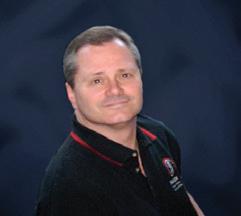
At the Academy’s upcoming Scientific Assembly in Austin next February, I will conclude nine years of service on AAEM’s board of directors. While I hope to continue to serve our Academy beyond that date as editor of Common Sense, which would make me an ex officio board member, I will no longer be representing the membership at large, voting, or actively guiding AAEM. Though I will miss helping direct the course of our Academy, nine years is more than enough time for anyone to make their mark and move on, giving someone else a chance to serve. None of us are indispensable, and there is much to be said for new blood.



Whether you are practicing emergency medicine, teaching it, or just learning it — you are smart, steady, creative, adaptable, and interested in the welfare of your fellow man. You earn your living by making good decisions quickly with limited information, and then acting decisively. And, since you have chosen to join the Academy, I know you are a fair and honest person and an ethical physician. You have all the skills you need to be an excellent leader. Not putting that ability to maximum use would be a terrible waste. Our specialty needs you, and AAEM needs you.
Five positions on the Academy’s board of directors will be up for grabs in the next election, and you might be perfect for one of those seats. Even if you run and lose you will have contributed to the health of our Academy, because AAEM is stronger when every election is contested. Of course there are other ways to be an active part of AAEM: you can serve on a committee, chair a committee, lead a state chapter, or help lead AAEM/ RSA if you are a resident or student. (And don’t forget that you can also help by writing for Common Sense!) However, nothing puts you in a position to do more good for emergency medicine than being an officer or director of the American Academy of Emergency Medicine.

Without AAEM, board certification in our specialty might not have the meaning or value it does now. Without AAEM, corporations would control even more emergency departments. Without AAEM, fewer emergency physicians would own and control their own practices in equitable, democratic groups. Neither ACEP nor any other organization puts the interests of individual emergency physicians over corporate interests the way the Academy does, and fights the battles AAEM fights. For a few concrete examples of that, go back to the Jan/Feb 2014 issue of Common Sense (Vol. 21, Issue 1) and reread “Highlights of AAEM’s Legal Advocacy for Emergency Physician’s” or my two editorials in that same issue, “Why
AAEM?” and “Legitimate.” Even now the Academy is working to protect independent, physician-owned, emergency medicine groups in ways that cannot yet be made public, but which will eventually make you proud of how AAEM differs from other professional societies — again.














































































































































I know what you are thinking: “I already have too much to do, and there are plenty of other people willing to do that job. They’ll be fine without me.” Wrong! While the Academy does have over 8,000 members, including residents, it is relatively small compared to most professional societies. An even smaller number of people drive AAEM and get its work done — work that benefits all board-certified emergency physicians and their patients. I believe that, at both the national and state levels, too few Academy members are actively involved. We need new blood in leadership positions at both levels.
When too few people are behind a state chapter, no matter how many members are actually on the rolls, that chapter is in danger of collapse when those few tire and move on. To ensure long-term stability, the leadership of each state chapter must make cultivating the next generation of leaders a priority. Even at the national level, there is risk in drawing leaders from too small a pool. New blood brings fresh perspectives, new ideas, and a different way of approaching things.
Continued on next page
NOVEMBER/DECEMBER 2014 COMMONSENSE 5 FROM THE EDITOR’S DESK
We’re listening, send us your thoughts!
AAEM Antitrust Compliance Plan: As part of AAEM’s antitrust compliance plan, we invite all readers of Common Sense to report any AAEM publication or activity which may restrain trade or limit competition. You may confidentially file a report at info@aaem.org or by calling 800-884-AAEM. COMMON SENSE Letters to the Editor AAEM Blog
The medical profession is in trouble, and emergency medicine is more threatened than most specialties. We are subject to more regulations than other specialties, such as EMTALA and balance billing laws; we take care of everyone, including patients other doctors actively shun, regardless of the patient’s ability or willingness to pay for that care; we depend largely on hospitals, and thus on hospital administrators, for the quality of our tools and work environment; for-profit, layperson-owned, publicly traded corporations like EmCare and Team Health control many of the jobs in our specialty — and now they are launching joint ventures with hospital chains and driving even more emergency physician groups out of business; and finally, even in 2014 there are still those who say EM isn’t a legitimate specialty and residency training in EM isn’t necessary. Battles I thought we won and put behind us in the 1980s and ‘90s go on, while new threats continue to arise. These things don’t take care of themselves; they must be actively addressed by knowledgeable and dedicated people. People like those who have led AAEM over the past 21 years — people like you. I know you are busy. All of us are busy. But trust me — you can find a way, and you will be glad you did.
In my time on the Academy’s board of directors, I have had my share of disagreements. I won some arguments and lost others. I have watched AAEM go down the road I chose for it, and seen it take other paths. What I have never seen is an Academy officer or director act with anything but the sincerest and most passionate desire to do the best thing for emergency medicine and the board-certified specialists who practice it. I have never seen dishonesty, self-interest, vanity, or loyalty to another entity influence the action of a single person on the board. I have never felt anything but proud of my fellow directors and the Academy’s officers, and that should make you proud too. I hope that also inspires you to serve and fills you with hope that we can make AAEM’s Vision Statement a reality:
A physician’s primary duty is to the patient. The integrity of this doctorpatient relationship requires that emergency physicians control their own practices free of outside interference.
We aspire to a future in which all patients have access to board-certified emergency physicians. ■

6 COMMONSENSE NOVEMBER/DECEMBER 2014 FROM THE EDITOR’S DESK
Get the AAEM Fact of the Day and other AAEM Updates. www.aaem.org/publications The AAEM Exclusive Professional Liability Insurance Program Coverage Highlights: Contact us TODAY! Call 202-263-4050 or visit https://AAEM.haysaffinity.com • Preferred Premium Rates for AAEM Members • Choice of Distinct Coverage Plans • Continuing Education Opportunities • Advocacy for AAEM Members • Assistance with Application Process • Reduced Renewal Application Process
Letters to the Editor
Andy Walker, MD FAAEM Editor, Common Sense AAEM Board of Directors
A “Letters to the Editor” feature is now available on the Common Sense section of the AAEM website. Members must log in with their AAEM username and password to read or post letters, or to comment on letters (www.aaem.org/publications/common-sense). If necessary, you may request that we post your letter anonymously and such requests will be reviewed on a case-by-case basis. The letters that I think are interesting, entertaining, educational, provocative, or of general interest, will be printed in Common Sense.
I hope to hear from many of you, even if you are criticizing me. I need your feedback to make Common Sense an interesting read and a good use of your time. I also want it to attract new members to the Academy. If you like something you see, let me know. If I make you mad, let me know. Especially if I make you mad. I want the “Letters to the Editor” feature to become a forum for civilized but vigorous argument, and the more vigorous the better.
— The Editor
Letter in response to the July/August 2014 “AAEM News” article titled “Metric Madness”: The Dying of the Light
I would like to thank the author of “Metric Madness” for clarity and courage, and the editors of Common Sense for sharing it and safeguarding its source. May simple words spark a fire of frank talk about serious issues.
The following perspectives come from 33 years as a single coverage ER Doc (one strand of our so-called Safety Net). Work means prioritizing urgent needs, juggling information, clinical status, and a Gatling-gun of communications. An array of problems and drama converge on the ED: threating trauma and illness, minor trauma and complaints, chronic recurrent symptoms, the indigent and uninsured, those with no other timely access to medical care, the intoxicated, the drug-seeking, the worried well, those plagued by voices or suicidal thoughts, the frail elderly, unmanageable teenagers and foster kids, and anyone dragged in by police, handcuffed and cursing.
Applying door-to-doc metrics is an unreasonable approach. Stable presentations and non-urgent issues fall into a different category. Human dynamics are complicated, often disorderly. It’s not a question of how fast you get your burger or the oil changed.
Length of Stay (LOS) is only partially (and inconsistently) under an ER Doc’s control. Want my metrics to shine? Give me a shift with evenlypaced, straightforward encounters and a savvy, hustling team for support. Entangle me with intractable system problems, spotty specialty coverage, nursing shortages, inefficient inpatient limits, and an overwhelmed hospitalist; and the admissions — the sickest patients — will linger for hours and hours on uncomfortable ED beds.
The electronic medical record has improved access to information, but the EMR’s cost/benefit ratio was never seriously studied. Computers were touted as safer and more efficient when they are neither. They’ve only changed the form of hectic-shift errors. They are less efficient: ask any veteran ER doc or nurse if triage and flow were better before or after. The system of software, upgrades, training, and IT handlers is also very, very expensive. Policymakers banking on EMRs saving health care dollars are in for a rude awakening.
Here’s more uncomfortable truth: navigating an EMR’s various fields, checkpoints, detours, glitches, and obstacles fragments attention, scrambles clear thinking, and drains mental energy. Critical analysis is a physician’s most important asset. Since time is a closed system, every minute struggling with a machine (entering data, orders, prescriptions, discharge instructions) is time siphoned away from good patient care (such as a detailed history and a thorough exam), from answering questions and alleviating concerns, from comforting someone in distress.
EMRs control the data that feed metric madness and support belief in false accomplishment and misunderstanding of what quality really means. This foolishness is destroying morale by adding more stress to an already stressful job. Caregiver health suffers under its impact. All this in the context of a growing physician shortage! A sizeable percentage of ED groups are already under-staffed, meaning overtime for the harried few carrying the load. Requests for locum tenens help are drastically increasing.
Those who took an oath to serve humanity need to take a hard look at what is at stake. Then, putting aside labels and political affiliations, we must join forces and command the high ground of what is truly best for patient care — enlisting strong voices and fearless leadership. Maybe we need a march on Washington, crying out, “Unshackle our EDs, support hard-working doctors & nurses, supply them with adequate resources!”
As an endangered canary in the mine, I sing the words of the poet Dylan Thomas: “Rage, rage against the dying of the light.”
Tom Moskalewicz, MD
Letter to the Editor Regarding: Academics for the Community Based Emergency Group:
I work for an independent democratic group in the mountain states. Our city has relied on physicians coming to practice from other places as there is currently no formal training program in the city. To this end, the city is embarking on a progressive program in medical education that includes a branch campus of the university medical school. As this program develops, there is currently a drive for recruiting physicians
Continued on next page
NOVEMBER/DECEMBER 2014 COMMONSENSE 7 FROM THE EDITOR’S DESK
practicing in the community to participate in the clinical education of medical students. This developing program has created two questions for me. Whose duty is medical education? How can a program function to the benefit of the community-based practicing emergency physician and the medical student?
The concept of emergency medical education in the community is not a new one. There are many benefits to participating in medical education in a community setting. For the students, most physicians practice in a community settings for most of their careers. What better setting to prepare for their future careers than in a busy community practice? The community setting has different resources and challenges for emergency physicians. Students can see first-hand how these interactions play out no matter what specialty they eventually pursue. Community physicians, on the other hand, have the opportunity to participate in positive learning experiences for students that will eventually shape how future colleagues perceive, appreciate or dismiss the practice of emergency medicine and their interactions with it in the future. As many physicians eventually practice in the area where they trained or went to medical school, physicians that participate in medical education may see the fruit of their labor in future colleagues practicing in their community within their career.
The challenge for the community-based emergency physician is teaching when time is a scarce resource. Our time is consumed with documentation and order entry in electronic medical records, meeting performance-based metrics and downward trending reimbursements that force us to see more patients in less time to stay afloat. Time for medical education competes with financial incentives in productivitybased reimbursement model. Many physicians will lose interest when education affects the bottom line at the end of a shift.
Can education and productivity find a happy balance in a busy community emergency department? What are the successful models for
Strength in Numbers
democratic groups to implement a medical education program that is fair to all practicing physicians? Is it fair to ask some physicians to contribute financially to balance the productivity of those physicians whose time is consumed with education? Editor and readers, I need your help in this regard.
Respectfully, Robert Lam, MD FAAEM
Thank you for writing. I hope our readers can answer your questions and give you sound advice on making this new program work, because I cannot. I do believe all physicians have an ethical duty to further medical education when they have the opportunity, and having taught medical students myself I understand how they can reduce flow through an ED. However, now that the EMR/EHR has taken hold and slowed patient flow more than any gang of medical students ever could, perhaps medical students might improve flow by acting as scribes rather than just standing and watching you perform an H&P? Whether entering data, collecting test results, or keeping patients informed, surely medical students can be made useful enough to offset the time it takes to teach them. And they are bound to improve customer satisfaction scores. Medical students may not have the entirely negative impact on an emergency physician’s bottom line that you anticipate.
I am confident that you will find a way to make this program work. Perhaps such programs will help lure graduating emergency medicine residents out of big cities and major trauma centers and into smaller communities and rural areas, where they are so desperately needed. I hope you will eventually write back, whether in a letter to the editor or a full-size article, and let us know how the program turned out and what you learned along the way. In the meantime: readers, Dr. Lam needs your help and advice! Either contact him directly or reply with your own letter to the editor. ■
— The Editor
AAEM 100% ED Groups
AAEM 100% ED Group Membership
AAEM instituted group memberships to allow hospitals/groups to pay for the memberships of all their EM board certified and board eligible physicians. Each hospital/group that participates in the group program will now have the option of two ED Group Memberships.

• 100% ED Group Membership receives a 10% discount on membership dues. All board certified and board eligible physicians at your hospital/group must be members.
• ED Group Membership receives a 5% discount on membership dues. Two-thirds of all board certified and board eligible physicians at your hospital/group must be members.
For these group memberships, we will invoice the group directly. If you are interested in learning more about the benefits of belonging to an AAEM ED group, please visit us at www.aaem.org or contact our membership manager at info@aaem.org or (800) 884-2236.
For a complete listing of 2014 100% ED Group members, go to www.aaem.org/membership/aaem-ed-group-membership.
8 COMMONSENSE NOVEMBER/DECEMBER 2014 FROM THE EDITOR’S DESK
Congress to Reconvene in November for Lame Duck Session
Williams & Jensen, PLLC
After approving a temporary measure to keep the government funded through December 11, the House and Senate concluded their work before the November 4th elections and are set to return on November 12th for a “lame-duck” session before the 114th Congress is seated in January 2015. As expected, the progress of legislation over the last several months was slow, with both parties bracing for an election where control of the Senate could come down to toss-up contests in several key states. The House is expected to remain under Republican control, with most models predicting that the GOP will add to their 34-seat majority.
Legislative priorities that could be addressed by Congress in the remainder of 2014 could vary based on the election results, but the top “must-pass” item on the agenda is another short-term government funding deal that will keep federal agencies operating through the first several months of next year.
One item that will again need to be addressed in the coming months is the “doc fix.” The current patch runs through the end of March 2015, and discussions about a permanent solution continue at the member and committee levels in the House and Senate. A permanent fix, which is supported by AAEM and many other provider groups, is something that many key members would like to accomplish, including the chairs and ranking members of the Finance, Ways & Means, and Energy and Commerce Committees. However, a permanent repeal must be offset by a minimum of $130 billion in cuts elsewhere in the budget, which has continued to pose a steep challenge for congressional negotiators. The House and Senate Committees of Jurisdiction have largely settled on the replacement policy for the Sustainable Growth Rate (SGR), but the need to find revenue pay-fors continues to stall efforts to enact a permanent fix. Advocates of a permanent fix have pointed out that over the past 10 years it cost tens of billions of dollars more to patch the SGR than it would have to fully repeal the policy. Physicians continue to press Congress to fix this issue by the end of the year, rather than adopting another short-term patch in February or March to avert a 25 percent cut in Medicare payments to providers.
Members of the AAEM board will be meeting with key members of Congress to receive an update on SGR reform efforts in December. AAEM has expressed support for additional changes to accompany doc fix legislation, including enhanced due process protections for physicians, billing transparency and reform that will allow emergency physicians to see what is billed and collected in exchange for their services, and increased funding and access for graduate medical education (GME). AAEM has also advocated an SGR replacement policy that will allow specialty societies and medical boards to provide input in setting quality standards and performance bonuses, rather than a “one size fits all” model that does not account for fundamental differences between specialties.
Another issue that may take center stage during the lame duck session is the federal government’s response to the Ebola outbreak. The chairman of the House Appropriations Committee indicated the committee’s support for the Obama administration’s proposal to redirect money from the Overseas Contingency Operations (OCO) account to combating Ebola in impacted regions. Chairman Hal Rogers (R-KY) has pressed the
administration for more details on how the funding would be spent, and he was joined by the ranking Republican on the Senate Armed Services Committee, who signaled he would withhold support for the request until a more detailed plan is made available.
In September, the Senate Health, Education, Labor, and Pensions (HELP) Committee and the Senate Appropriations Committee’s Labor, Health and Human Services, Education, and Related Agencies (LHHS) Subcommittee held a joint hearing to discuss the Ebola outbreak. The committees received testimony from representatives of several key agencies, including the CDC, the National Institutes of Health (NIH), and the Department of Health and Human Services (HHS). The agencies describe the administration’s response as proactive, and have said that they are fully prepared to contain the spread of the virus. Due to increasing public attention to the issue, additional hearings are likely following the elections, while discussions over strategy and funding for Ebola response efforts are expected to continue over the next several weeks. Meanwhile, a number of congressional Republicans have urged the Obama administration to appoint an official to lead the Ebola response. Senate Republicans have been vocal in calling for improved coordination in the federal government’s response to the outbreak.
Senate control will be an important factor in next year’s agenda. For instance, a Republican Senate would increase the chances for medical liability reform legislation. The would-be GOP chairmen of the House and Senate Judiciary Committees have signaled that liability reform would be high on their agenda. A Republican Senate may also seek to use a procedure known as “reconciliation” to change aspects of the Affordable Care Act (ACA), such as the 2.3 percent excise tax on medical devices. If the Senate remains Democratic, it may be conducive to an agreement on budgets, taxes, and entitlement reform. In the last several years, smaller deals have been negotiated between Republican House leadership and Senate Democratic leaders, setting up the possibility for a larger deal in the last two years of the Obama administration.
EMSC Reauthorization Approved
In September, the U.S. House of Representatives and the U.S. Senate approved the bipartisan Emergency Medical Services for Children (EMSC) Reauthorization Act of 2014 (P-L 113-180), legislation that reauthorizes the program through Fiscal Year (FY) 2019. EMSC was established in 1984, and was set to expire on September 30. The bill authorizes spending of up to $20.2 million annually for each of the next five years. Members of both parties described the legislation as important to ensuring that EMS services can be provided to ill or injured children regardless of where they live or travel.
The bill was authored by Senators Bob Casey (D-PA) and Orrin Hatch (RUT), and Representatives Peter King (R-NY) and Jim Matheson (D-UT). Matheson said that it is critical to provide resources towards the approximately 26 million child and adolescent ED visits that occur annually. The legislation funds a number of activities focused on EMS care for children, including data analysis, readiness projects, and grants for states. ■
NOVEMBER/DECEMBER 2014 COMMONSENSE 9 WASHINGTON WATCH
Recognition Given to Foundation Donors
Levels of recognition to those who donate to the AAEM Foundation have been established. The information below includes a list of the different levels of contributions. The Foundation would like to thank the individuals below who contributed from 1/1/14 to 9/29/14
AAEM established its Foundation for the purposes of (1) studying and providing education relating to the access and availability of emergency medical care and (2) defending the rights of patients to receive such care and emergency physicians to provide such care. The latter purpose may include providing financial support for litigation to further these objectives. The Foundation will limit financial support to cases involving physician practice rights and cases involving a broad public interest. Contributions to the Foundation are tax deductible.
Donor
Mel E. Herbert, MD FAAEM
Lance H. Hoffman, MD FAAEM
Mark Reiter, MD MBA FAAEM
Joel M. Schofer, MD MBA CPE FAAEM
Contributor
Juan F. Acosta, DO MS FAAEM
Leonardo L. Alonso, DO FAAEM
Terence J. Alost, MD MBA FAAEM
Donald W. Alves, MD MS FS FAAEM FACEP
Aaron D. Andersen, MD FAAEM
Jonathan D. Apfelbaum, MD FAAEM
Carmelito Arkangel, Jr., MD FAAEM
Carmelito Arkangel, Jr., MD FAAEM
Aditya Arora, MD FAAEM
Eric Y. Baden, MD FAAEM
Garo Balkian, MD FAAEM
Robert Bassett, DO FAAEM
Philip Beattie, MD FAAEM
Brett Bechtel, MD FAAEM
Doug Benkelman, MD FAAEM
Dale S. Birenbaum, MD FAAEM
Howard Blumstein, MD FAAEM
Joshua P. Bobko, MD FAAEM
Michael A. Bohrn, MD FAAEM
Michael A. Bohrn, MD FAAEM
Mark Avery Boney, MD FAAEM
Maged S. Botros, MD FAAEM
Eric W. Brader, MD FAAEM
Asher Brand, MD FAAEM
Greg Bredemeier, MD FAAEM
J. Allen Britvan, MD FAAEM
Heather C. Bruner, MD FAAEM
Michael R. Burton, MD FAAEM
Thomas J. Calvert, MD FAAEM
John W. Cartier, MD FAAEM
Anthony Catapano, DO
David Champ, MD FAAEM
Hong Chong, MD FAAEM
Frank L. Christopher, MD FAAEM
Garrett Clanton, II, MD FAAEM
William K. Clegg, MD FAAEM
Robert Lee Clodfelter, Jr., MD FAAEM
Robert Lee Clodfelter, Jr., MD FAAEM
Alessandra Conforto, MD FAAEM
Steven K. Costalas, DO FAAEM
John L. Coyner, MD FAAEM
Peter B. Cridge, MD FAAEM
Ramon L. Cruz Rivera, MD FAAEM
Eric S. Csortan, MD FAAEM
Stanley Czarnecki, MD FAAEM
Stanley Czarnecki, MD FAAEM
Robert J. Darzynkiewicz, MD FAAEM
Jerry E. Davis, MD FAAEM
Francis X. Del Vecchio, MD FAAEM
Manuel J. Delarosa, MD FAAEM
Scot M. DePue, MD FAAEM
Cheryl L. Dickason, MD FAAEM
Robert L. Dickson, MD FAAEM
Steven E. Diebold, MD FAAEM
John J. Dillon, MD
John Timothy DiPasquale, MD FAAEM
Walter D. Dixon, MD FAAEM
Aaron D. Dora-Laskey, MD FAAEM
Louis J. Durkin, MD FAAEM
David A. Dwyer, MD FAAEM
Jean Ann Dymott, MD FAAEM
Heather Ellsworth, MD FAAEM
Christopher A. Ewing, MD FAAEM
Elizabeth A. Fair, MD FAAEM
Michael J. Falk, MD FAAP FRCP FAAEM
Neal N. Faux, MD FAAEM
Jacob R. Fenster
Deborah M. Fernon, DO FAAEM
Clifford J. Fields, DO FAAEM
Patrick M. Flaherty, DO FAAEM
Mark A. Foppe, DO FAAEM
Luke Friebertshauser
Robert A. Frolichstein, MD FAAEM
Paul W. Gabriel, MD FAAEM
Frank Gaudio, MD FAAEM
Albert L. Gest, DO FAAEM
Kathryn Getzewich, MD FAAEM
Bassam Gholam, MD FAAEM FACEP
Ulric A. Gilkes, MD FAAEM
Steven R. Ginder, MD FAAEM
Samuel H. Glassner, MD FAAEM
Robert C. Greaves, MD FAAEM
Christopher R. Grieves, MD FAAEM
Kevin Griffith, MD JD FAAEM
Robert E. Gruner, MD FAAEM
Neil Gulati, MD FAAEM
Michael N. Habibe, MD FAAEM
William B. Halacoglu, DO FAAEM
Dennis P. Hanlon, MD FAAEM
John C. Haughey, MB BCH BAO FAAEM
Clint Hawthorne, MD FAAEM
Stephen R. Hayden, MD FAAEM
Julia L. Hays, MD FAAEM
Edward W. Hessel, MD FAAEM
Victor S. Ho, MD FAAEM
John Hopkins, DO FAAEM
Joseph C. Howton, MD FAAEM
David R. Hoyer, Jr., MD FAAEM
Felix Y. Huang, MD
Irving P. Huber, MD FAAEM
Elizabeth J. Hull, MD FAAEM
Timothy J. Huschke, DO FAAEM
Daniel M. Ingram, MD FAAEM
Tapio O. Innamaa, MD
Ralf Joffe, DO FAAEM
Carroll Don Johnson, MD FAAEM
P. Scott Johnston, MD FAAEM
Jerry L. Karr, DO FAAEM
Shammi R. Kataria, MD FAAEM
Bilal A. Kattan, MD
Brian M. Kelley, DO FAAEM
John H. Kelsey, MD FAAEM
Erin M. Khouri, DO FAAEM
Christopher L. Klingenberg, MD FAAEM
Robert G. Koch, MD FAAEM
Deborah Korik, MD FAAEM
Ron Koury, DO FAAEM
Chris Kramer, DO FAAEM
Keith J. Kuhfahl, DO FAAEM
Erik Kulstad, MD FAAEM
Andrew Langsam, MD FAAEM
Chaiya Laoteppitaks, MD FAAEM
David W. Lawhorn, MD FAAEM
Liza Lê, MD FAAEM
Jonathan D. Lee
Richard Lee, MD FAAEM
Stephen J. Leitner, MD FAAEM
Donald J. Linder, DO FAAEM
David Liss, MD
Bruce E. Lohman, MD FAAEM
Jose Abraham Lopez, MD FAAEM
Richard C. Lotsch, DO FAAEM
John W. Love, MD FAAEM
Eric Lubliner, MD FAAEM
Michael Lucca, MD FAAEM
Ronald Lutz, Jr., MD FAAEM
Christopher K. Marcuzzo, MD FAAEM
Scott P. Marquis, MD FAAEM
David Mason, MD FAAEM
Joseph L. Mastro, MD FAAEM
John R. Matjucha, MD FAAEM
Karen G. Maury, MD FAAEM
Keith L. Mausner, MD FAAEM
Monika Mavill
Timothy D. McGuirk, DO FAAEM
Erica S. McKernan, MD FAAEM
Valerie G. McLaughlin, MD FAAEM
Paul D. McMullen, MD FAAEM
David E. Meacher, MD FAAEM
Chris A. Meeker, MD FAAEM
Bryan K. Miksanek, MD FAAEM
Lisa D. Mills, MD FAAEM
Peter B. Mishky, MD FAAEM
Noel T. Moore, MD FAAEM
Teresita Morales-Yurik, MD FAAEM
Claud E. Morgan, MD FAAEM
Elizabeth A. Moy, MD FAAEM
Heather M. Murphy-Lavoie, MD FAAEM
Nicholas J. Musisca, MD
John Tobias Nagurney, MD MPH FAAEM
Melissa Natale, MD FAAEM
David Nathan, MD FAAEM
Michelle S. Nathan, MD FAAEM
Long Nguyen, MD FAAEM
Craig Norquist, MD FAAEM
Marcus Obeius, DO FAAEM
Paul D. O'Brien, MD FAAEM
Isaac A. Odudu, MD
Robert Verne Oliver, MD FAAEM
Stephanie S. Ortega, MD FAAEM
Alonso J. Osorio-Giraldo, MD FAAEM
John C. Owens, MD FAAEM
Paul M. Peindl, MD FAAEM
Vanessa C. Peluso, MD FAAEM
Hector L. Peniston-Feliciano, MD FAAEM
Catherine V. Perry, MD FAAEM
Frank S. Pettyjohn, MD FAAEM
Patricia Phan, MD FAAEM
Patricia Phan, MD FAAEM
Donald G. Phillips, DO FAAEM
Andrew T. Pickens, IV, MD JD MBA FAAEM
Matthew W. Porter, MD FAAEM
Robert H. Potts, Jr., MD FAAEM
Michael S. Pulia, MD FAAEM
Yadira Ramos-Arias, MD FAAEM
Kevin C. Reed, MD FAAEM
Jeffrey A. Rey, MD FAAEM
Phillip L. Rice, Jr., MD FAAEM
Fuli Richie
Howard M. Rigg, III, MD FAAEM
Brian A. Rike, DO FAAEM
Ralph J. Riviello, MD FAAEM
Francisco Rodriguez, MD
Steven B. Rosenbaum, MD FAAEM
Eric M. Rudnick, MD FAAEM
Roque Ruggero, MD FAAEM
Stewart Sanford, MD FAAEM
Marc Santambrosio, DO FAAEM
Charles A. Schmier, MD FAAEM
David T. Schwartz, MD FAAEM
H. Edward Seibert, MD FAAEM
Eric M. Sergienko, MD FAAEM
Sachin J. Shah, MD FAAEM
William M. Shapiro, MD FAAEM
Indrani A. Sheridan, MD FAAEM
Laura Shih, DO FAAEM
Richard D. Shih, MD FAAEM
Continued on next page
10 COMMONSENSE NOVEMBER/DECEMBER 2014 FOUNDATION DONATIONS
Recognition Given to PAC Donors
AAEM PAC is the political action committee of the American Academy of Emergency Medicine. Through AAEM PAC, the Academy is able to support legislation and effect change on behalf of its members and with consideration to their unique concerns. Your support of AAEM PAC is essential to its success.
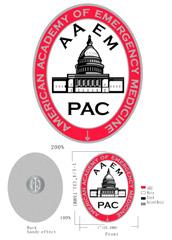
Levels of recognition to those who donate to the AAEM PAC have been established. The information below includes a list of the different levels of contributions. The PAC would like to thank the individuals below who contributed from 1/1/14 to 9/29/14
Steven E. Diebold, MD FAAEM
Robert E. Leyrer, MD FAAEM
Eric M. Sergienko, MD FAAEM
Joel M. Schofer, MD MBA CPE FAAEM
Michael R. Burton, MD FAAEM Member
Leonardo L. Alonso, DO FAAEM
Aaron D. Andersen, MD FAAEM
Carmelito Arkangel, Jr., MD FAAEM
Eric Y. Baden, MD FAAEM
Garo Balkian, MD FAAEM
Mike Barker, MD FAAEM
Robert Bassett, DO FAAEM
Philip Beattie, MD FAAEM
Joshua P. Bobko, MD FAAEM
Mark Avery Boney, MD FAAEM
Eric W. Brader, MD FAAEM
Asher Brand, MD FAAEM
Greg Bredemeier, MD FAAEM
J. Allen Britvan, MD FAAEM
John W. Cartier, MD FAAEM
Anthony Catapano, DO
Garrett Clanton, II, MD FAAEM
William K. Clegg, MD FAAEM
Robert Lee Clodfelter, Jr., MD FAAEM
Ramon L. Cruz Rivera, MD FAAEM
Eric S. Csortan, MD FAAEM
Brian J. Cutcliffe, MD FAAEM
Stanley Czarnecki, MD FAAEM
Christopher Xavier Daly, MD FAAEM
Robert J. Darzynkiewicz, MD FAAEM
Jerry E. Davis, MD FAAEM
Francis X. Del Vecchio, MD FAAEM
Scot M. DePue, MD FAAEM
Cheryl L. Dickason, MD FAAEM
Robert L. Dickson, MD FAAEM
Asaad Suliman Shujaa, MD FRCPC FAAEM
Jonathan F. Shultz, MD FAAEM
Michael E. Silverman, MD FAAEM FACP
Larry L. Simpson, MD FAAEM
Katarzyna B. Sims, MD
Michael Slater, MD FAAEM
Henry E. Smoak, III, MD FAAEM
Marc D. Squillante, DO FAAEM
Michael G. St. Marie, MD FAAEM
Christopher H. Stahmer, MD
Robert E. Stambaugh, MD FAAEM
Keith D. Stamler, MD FAAEM
Steven Elsbecker, DO
Elizabeth A. Fair, MD FAAEM
James E. Ferguson, MD FAAEM
Clifford J. Fields, DO FAAEM
Mark A. Foppe, DO FAAEM
Luke Friebertshauser
Robert A. Frolichstein, MD FAAEM
Paul W. Gabriel, MD FAAEM
Leigh S. Galatzan, MD FAAEM
Steven H. Gartzman, MD FAAEM
Albert L. Gest, DO FAAEM
Kathryn Getzewich, MD FAAEM
Bassam Gholam, MD FAAEM FACEP
Daniel V. Girzadas, Jr., MD RDMS FAAEM
Hermann Gonzalez, DO FAAEM
Robert C. Greaves, MD FAAEM
Christopher R. Grieves, MD FAAEM
Neil Gulati, MD FAAEM
Michael N. Habibe, MD FAAEM
John C. Haughey, MB BCH BAO FAAEM
Victor S. Ho, MD FAAEM
John Hopkins, DO FAAEM
David R. Hoyer, Jr., MD FAAEM
Felix Y. Huang, MD
Irving P. Huber, MD FAAEM
P. Scott Johnston, MD FAAEM
Shammi R. Kataria, MD FAAEM
Bilal A. Kattan, MD
Erin M. Khouri, DO FAAEM
Christopher L. Klingenberg, MD FAAEM
Frederick Kotalik, MD FAAEM
Erik Kulstad, MD FAAEM
Chaiya Laoteppitaks, MD FAAEM
David W. Lawhorn, MD FAAEM
David R. Steinbruner, MD FAAEM
Gregory J. Sviland, MD FAAEM
Khanh H. Thai, MD FAAEM
Jalil A. Thurber, MD FAAEM
Charles W. Todd, MD FAAEM
Jorge Danl Trujillo, MD FAAEM
Jack Tsai, MD FAAEM
Alan T. Uyeno, MD FAAEM
Robert Stephen Venable, MD FAAEM
Christopher P. Visser, MD FAAEM
Christopher M. Voigt, Sr., MD FAAEM
Roland S. Waguespack, III, MD FAAEM
John W. Love, MD FAAEM
Christopher K. Marcuzzo, MD FAAEM
Scott P. Marquis, MD FAAEM
David Mason, MD FAAEM
John R. Matjucha, MD FAAEM
Peter B. Mishky, MD FAAEM
Noel T. Moore, MD FAAEM
Elizabeth A. Moy, MD FAAEM
Heather M. Murphy-Lavoie, MD FAAEM
Melissa Natale, MD FAAEM
Long Nguyen, MD FAAEM
Isaac A. Odudu, MD
Robert Verne Oliver, MD FAAEM
Susan R. O'Mara, MD FAAEM
Alonso J. Osorio-Giraldo, MD FAAEM
Ramon J. Pabalan, MD FAAEM
Hector L. Peniston-Feliciano, MD FAAEM
Catherine V. Perry, MD FAAEM
Paul M. Petty, MD FAAEM
Patricia Phan, MD FAAEM
Rian John Pillitteri, MD FAAEM
Robert H. Potts, Jr., MD FAAEM
Michael S. Pulia, MD FAAEM
Jeffrey A. Rey, MD FAAEM
Daniel R. Ricciardi, MD FAAEM
Howard M. Rigg, III, MD FAAEM
Brian A. Rike, DO FAAEM
Francisco Rodriguez, MD
Steven B. Rosenbaum, MD FAAEM
Eric M. Rudnick, MD FAAEM
Roque Ruggero, MD FAAEM
Stewart Sanford, MD FAAEM
Charles A. Schmier, MD FAAEM
H. Edward Seibert, MD FAAEM
Benjamin Walrath, MD FAAEM
Jonathan Wassermann, MD FAAEM
Grant Wei, MD FAAEM
Scott G. Weiner, MD MPH FAAEM
Christopher Weissman, MD FAAEM
Gregory A. West, MD FAAEM
Christopher R. Westfall, DO FAAEM
Kay Whalen, MBA CAE
William David Wilcox, Sr., MD FAAEM
Joanne Williams, MD FAAEM
Justin Barrett Williams, MD FAAEM
Theodore M. Willmore, MD FAAEM
Sachin J. Shah, MD FAAEM
William M. Shapiro, MD FAAEM
Jonathan F. Shultz, MD FAAEM
Michael E. Silverman, MD FAAEM FACP
Katarzyna B. Sims, MD
Michael Slater, MD FAAEM
Henry E. Smoak, III, MD FAAEM
Donald L. Snyder, MD FAAEM
Christopher H. Stahmer, MD
David R. Steinbruner, MD FAAEM
Gregory J. Sviland, MD FAAEM
Sharon A. Swencki, MD FAAEM
William E. Swigart, MD FAAEM
Christopher H. Taranto, DO
Jalil A. Thurber, MD FAAEM
Charles W. Todd, MD FAAEM
Evan B. Tow, DO FAAEM
Suzana Tsao, DO FAAEM
Roland S. Waguespack, III, MD FAAEM
Wm. Bruce Watson, MD FAAEM
James Allen Webley, MD FAAEM
Grant Wei, MD FAAEM
Scott G. Weiner, MD MPH FAAEM
Gregory A. West, MD FAAEM
Christopher R. Westfall, DO FAAEM
Gregory P. Wheeler, DO
Joanne Williams, MD FAAEM
Justin Barrett Williams, MD FAAEM
Emily Wolff, MD FAAEM
George Robert Woodward, DO FAAEM
Anita M. Ziemak, MD FAAEM ■
Janet Wilson, CAE
Emily Wolff, MD FAAEM
Samuel Woo, MD FAAEM
Patrick G. Woods, MD FAAEM
George Robert Woodward, DO FAAEM
Dale P. Woolridge, MD FAAEM
Susie M. Wyse, MD FAAEM
Marc B. Ydenberg, MD FAAEM
Anita M. Ziemak, MD FAAEM
Leslie Zun, MD MBA FAAEM
Michael D. Zwank, MD FAAEM ■
NOVEMBER/DECEMBER 2014 COMMONSENSE 11 PAC DONATIONS Donate to the AAEM Foundation! Visit www.aaem.org or call 800-884-AAEM to make your donation.
Upcoming Conferences: AAEM Directly & Jointly Provided and Recommended
AAEM is featuring the following upcoming conferences and activities for your consideration. For a complete listing of upcoming conferences and other meetings, please visit: www.aaem.org/education/aaem-recommended-conferences-and-activities
AAEM CONFERENCES
November 12, 2014
• AAEMLa Emergency Medicine Resident Conference and Annual Chapter Meeting
New Orleans, LA www.aaem.org/membership/state-chapters/aaemla
Novmeber 13, 2014
• CAL/AAEM Orange County Speaker Series Irvine, CA www.calaaem.org/news
November 20, 2014
• CAL/AAEM San Francisco Bay Speaker Series San Francisco Bay, CA www.calaaem.org/news
November 20, 2014
• Delaware Valley Chapter of AAEM Resident’s Day Meeting
Philadephila, PA www.aaem.org/membership/state-chapters/dv-residents-day
February 28-March 4, 2015
• AAEM 21st Annual Scientific Assembly Austin, TX www.aaem.org/AAEM15
• February 28, 2015 — Preconference Courses
Resuscitation for Emergency Physicians — 1.5 Day Course
Ultrasound for Beginners
The Opioid-Free ED: Theoretical BS or Practical Solution?
Networked Learning: Lifelong Learning in the Social Era
Violence and Self-Protection in the ED
Pediatric and Maternal Simulations
Philosophy of Practicing Emergency Medicine
So You Think You Can Interpret an EKG?
Creating a Sustainable Democratic Practice: What Works and What Does Not — Two Half-Day Courses
• March 1, 2015 — Preconference Courses
From Davy Jones’ Locker to the Wild Blue Yonder: Extremes in Medicine — Jointly sponsored by USAAEM
Advanced Ultrasound
2014 LLSA Review Course
AAEM-RECOMMENDED CONFERENCES
November 14-16, 2014
• The Difficult Airway Course: Emergency™ San Diego, CA www.theairwaysite.com
December 5-9, 2014
• ESEM 2014 Scientific Conference Dubai, UAE www.esem2014.com
December 7-12, 2014
• Current Concepts in EM Wailea, HI https://emergenciesinmedicine.org/Home/Conferences
March 6-8, 2015
• The Difficult Airway Course: Emergency™ Orlando, FL www.theairwaysite.com
March 27-29, 2015
• The Difficult Airway Course: Emergency™ Las Vegas, NV www.theairwaysite.com
April 24-26, 2015
• The Difficult Airway Course: Emergency™ Boston, MA www.theairwaysite.com
June 5-7, 2015
• The Difficult Airway Course: Emergency™ St. Louis, MO www.theairwaysite.com
September 4-9, 2015
• Mediterranean Emergency Medicine Congress (MEMC VIII) Rome, Italy www.emcongress.org/2015
Do you have an upcoming educational conference or activity you would like listed in Common Sense and on the AAEM website?
Please contact Emily DeVillers to learn more about the AAEM endorsement and approval process: edevillers@aaem.org
All provided and recommended conferences and activities must be approved by AAEM’s ACCME Subcommittee.
12 COMMONSENSE NOVEMBER/DECEMBER 2014 UPCOMING CONFERENCES w
Scientific Assembly Update
 Joseph Lex, Jr., MD MAAEM FAAEM AAEM Education Committee
Joseph Lex, Jr., MD MAAEM FAAEM AAEM Education Committee
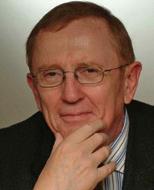
I lived in Texas for seven years. From 1979 to 1982, I was a Certified Emergency Nurse at Presbyterian Hospital in Dallas. Then, from 1982 to 1986, I went to medical school at the University of Texas Health Science Center in San Antonio. Just up the road 80 miles was Austin, a rather odd place in the center of the state that seemed different from the rest of Texas. I attended fundraisers for the publication Texas Observer and met authors Studs Terkel and James Michener, and civil rights activist Virginia Foster Durr. In the many clubs on 6th Street, I saw up-and-coming music acts like Nanci Griffith, Lyle Lovett, Stevie Ray Vaughan, and Rickie Lee Jones, and old favorites like Bruce “U. Utah” Phillips and Willie Nelson.

I revisited Austin in late August to give rounds at the new Emergency Medicine Residency Training Program (http://www.austingme.com/ residency-programs/emergency-medicine) and to do a site visit for the 2015 Scientific Assembly, which will be at the Hilton Austin from February 28th to March 4th, 2015. I was stunned to find that Austin is now the eleventh largest city in the United States, with a population pushing 900,000 people; that Brackenridge Hospital is now University Medical CenterBrackenridge, which has been completely rebuilt in the last few years; and that their EM residency program will graduate its initial class a few months after we meet there.
Austin is definitely the “Live Music Capital of the United States” — there are more music venues per capita than any other U.S. city.

Austin is also home to the Texas Memorial Museum, the Blanton Museum of Art, the Bob Bullock Texas State History Museum, the Austin Museum


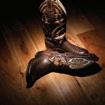
of Art (AMOA), the Elisabet Ney Museum, and the galleries at the Harry Ransom Center. The Texas State Capitol itself is worth a visit. You can also visit the Lyndon Baines Johnson Library and Museum, which houses documents and artifacts related to the Johnson administration, including LBJ’s limousine and a re-creation of the Oval Office. And then you can visit the O. Henry House Museum, which served as his residence from 1893 to 1895. Plan to take a selfie with the statues of Stevie Ray Vaughan, Willie Nelson, the Mangia dinosaur, and the Taco Maria lady at Taco Xpress in South Austin. It may be too early in the year for a visit to the Congress Avenue Bridge, which houses the world’s largest urban population of Mexican Free-Tailed bats; after the hibernation season ends, up to 1.5 million bats emerge every evening around sunset in search of insects.
And if, like me, you love historical cemeteries, the Texas State Cemetery just a few blocks from the capitol building is absolutely steeped in history. Visit the final resting places of everyone from confederate General Albert Sidney Johnston to Governor Ann Richards, from Senator Ralph Yarborough to Representative Barbara Jordan, and from the Father of Texas Stephen Austin to multimillion selling author James Michener. About the Scientific Assembly: you’re going to love it. Starting with several preconference courses — both familiar and new — and continuing through three full days of didactic sessions, you will find plenty of useful information to help you take better care of your patients, or to advance your own career wellness.
A couple of preconference sessions bear special mention. When Brackenridge Hospital built new intensive care units, the old ones were converted to simulation laboratories. We are negotiating with the people
NOVEMBER/DECEMBER 2014 COMMONSENSE 13 VIEW FROM THE PODIUM
21st ANNUAL SCIENTIFIC ASSEMBLY HILTON AUSTINAUSTIN, TX FREE Registration For All AAEM Members!* *Refundable deposit required Continued on next page AUSTIN TEXAS REGISTRATION NOW OPEN www.aaem.org/AAEM15/Registration
See you inAustin!
AAEM’s Annual Scientific Assembly — perpetually advancing emergency medicine for the clinician and proudly the premier clinical conference in emergency medicine.
Scientific Assembly Highlights
• FREE registration for members, with refundable deposit
• Convenient mobile app featuring the program, exhibitors, and important updates. Build your own schedule & take notes in app!
• “Passport to Prizes” in the exhibit hall
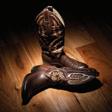
• Open Mic Sessions

• Expanded pecha kucha sessions (six minute and 40 second presentations)
Invite a Friend
If you’re a veteran of Scientific Assembly, or if you’re planning on attending for the first time in 2015, consider inviting a friend or colleague to join you. Encourage residents and medical students interested in emergency medicine to attend as well. CME will be available; presented by the top clinician educators in emergency medicine.
Travel to Austin, TX
In addition to attending the premier clinical conference in emergency medicine, take advantage of all the city has to offer. Austin features legendary live music, burgeoning restaurant scene, world-class museums, one-of-a-kind shopping, beautiful outdoor spaces, and a unique culture.


If you’re visiting Austin, TX, from outside the United States, you may need a visa to enter the country. Visa requirements for entering the United States can be found at: www.aaem.org/AAEM15/travel
Register Today!
Registration for the 21st Annual Scientific Assembly is now open at www.aaem.org/AAEM15/registration. For up-to-the-minute information about registration and Scientific Assembly — follow AAEM on social media. Visit AAEM Connect, our interactive dashboard, to view updates from Facebook, Twitter, LinkedIn, the AAEM blog, and podcasts www.aaem.org/connect. Look for hashtag #AAEM15.
who run them to do the ultrasound courses and a special pediatric/obstetric simulation course at their facilities on Saturday and Sunday morning before the Scientific Assembly opens. The hospital is just a ten-minute walk from the host hotel in what should prove to be perfect walking weather. There will also be preconference workshops on pain management, EKG interpretation, and administrative dilemmas; as well as a 1.5 day Resuscitation Course and half-day LLSA Review.
The program itself is coming together nicely. View the preliminary program online at www.aaem.org/AAEM15/attendees. There will be the usual tracks on Best of the Best Literature Updates, Critical Care Updates, practical day-to-day information, prehospital, and pediatrics; as well as new Point-Counterpoint debates and some surprises. Our keynote speaker is Simon Carley, MB ChB PGCTLP MPhi, Professor of Emergency Medicine and Consultant in Emergency Medicine at Manchester Metropolitan University, co-founder of BestBets and the St. Emlyn’s website.
I am particularly excited about the Pecha Kucha sessions — 20 slides, 20 seconds each, and done. In 2014 it was a new concept and we cautiously programmed only a half day. Because of its overwhelming success,
we are expanding the PKs to two full days in 2015. We offered members and junior faculty at training programs the opportunity to present a PK, and the response was more than we could have wished — all 59 speaking slots rapidly filled. There is a special PK subcommittee planning an unforgettable experience for those who speak or attend. They even developed their own logo and will have a special hourglass timekeeper to keep speakers on schedule. This is unlike anything you will see at any other national medical society meeting.
So consider this a teaser and an invitation. You obviously need to be there to see for yourself what we have planned. It is a meeting to keep the American Academy of Emergency Medicine at the forefront in emergency medicine education. Register now at www.aaem.org/AAEM15/ registration
Easily spot information about Pecha Kucha sessions — look for the AAEM PK logo. ■
14 COMMONSENSE NOVEMBER/DECEMBER 2014 VIEW FROM THE PODIUM
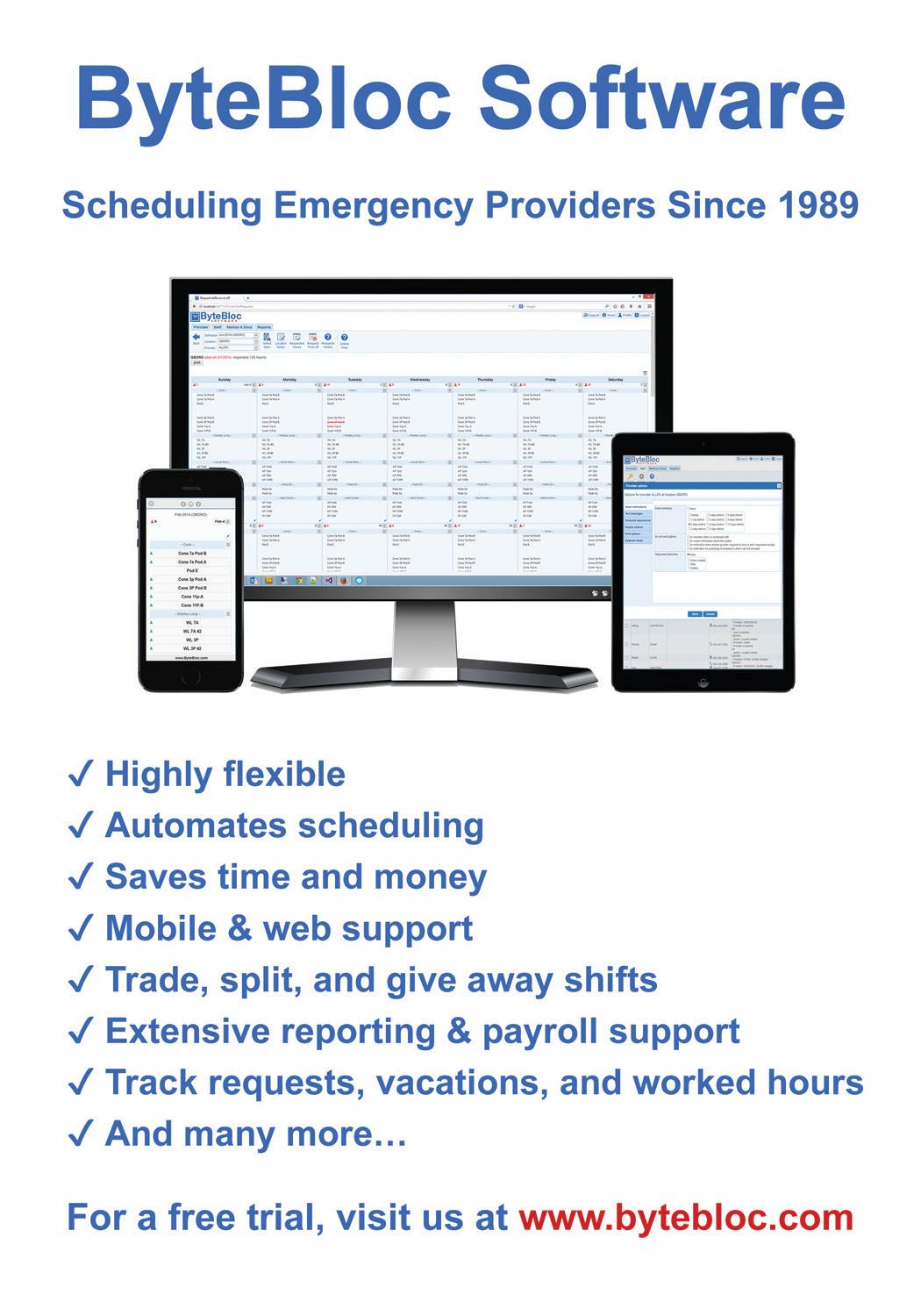
NOVEMBER/DECEMBER 2014 COMMONSENSE 15
Dollars & Sense
Joel M. Schofer, MD MBA CPE FAAEM
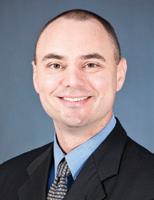 AAEM Secretary-Treasurer Commander, U.S. Navy Medical Corps
AAEM Secretary-Treasurer Commander, U.S. Navy Medical Corps
Types of Insurance You Might Need Life Insurance
“More money is wasted on life insurance than probably any other insurance product … It cannot be overemphasized that cash-value life insurance is probably one of the biggest scams around.”
— Paul Sutherland in the AMA Physician’s Guide to Financial Planning (2008)
If you died this year, would anyone suffer financially? If the answer is “no,” then you don’t need life insurance. If the answer is “yes,” then you need life insurance, and probably a lot of it.
There are two types of life insurance. First, there are products that combine insurance with an investment account, often referred to as “cash-value” or “permanent” life insurance. Many insurance agents and companies will try to sell you this, but it is probably not the kind of insurance you need. It does have some tax advantages, but the downside of these policies is that the insurance agents who sell them collects high fees — from you. In addition, early premiums go mainly toward sales commissions and other expenses and not into your investment account.
The second type of life insurance is “term” insurance. It provides only a death benefit and does not build any cash value or serve as an investment. This is likely the only kind of life insurance that you need. To quote again from the AMA’s financial planning guide, “I cannot emphasize enough the importance of sticking to simple, unencumbered term life insurance it fits 99% of insurance needs.” It is less expensive than cash-value/permanent policies and you can take the difference and invest it in a retirement account or other low-cost investment vehicle. You don’t need an insurance agent to purchase this and should simply try term4sale.com, selectquote.com, accuterm.com, insure.com, or other similar websites.
When you buy term insurance, make sure that it is renewable without a medical examination. You might also consider decreasing term insurance, which is cheaper even that standard term insurance. With this type of term insurance, the death benefit progressively decreases over time. Your need for life insurance should decline with age, as children grow up and become independent and your investment portfolio grows. Eventually you should need no life insurance at all, which is one reason arguments for “permanent” life insurance should fall on deaf ears.
Long-Term Care Insurance
Sometimes called “nursing home insurance,” this is usually purchased by people over the age of 50 to pay for nursing or at-home care. If you are under 50, you should probably purchase disability insurance instead of long-term care insurance.
The rates and terms of these policies are highly variable, and whether you get one is an individual decision. The earlier you purchase it the cheaper it is, but obviously the total money you’ll pay out over the life of the policy is higher. As a physician, if you are a disciplined and successful investor you will probably have enough assets to self-insure against the need for prolonged care, so I would suggest that most emergency physicians will not need this type of insurance. But circumstances and goals obviously vary, so it is something to consider. If it is important to you that your nest egg is passed to your heirs, you may want to consider this insurance so it is not passed to a nursing home instead.
Flood Insurance
Homeowner’s and renter’s insurance do not cover flood damage. To find out if your home is at risk of a flood, go to floodsmart.gov. There you can also find information about the government’s low-cost flood insurance programs.
Earthquake Insurance
If you live in an area at risk for earthquakes, you’ll need earthquake insurance in addition to your homeowner’s insurance. Like floods, homeowner’s and renter’s insurance do not cover earthquakes. California’s earthquake website, earthquakeauthority.com, is a good place to start. Volcanic eruptions are often not covered either, so you may want to purchase an additional policy or a rider to your homeowner’s policy if you live on the big island of Hawaii or at the foot of Mount St. Helens.
Types of Insurance You Probably Don’t Need
Life Insurance for Children
While you will be grief-stricken if one of your children dies, you do not rely on his or her income; therefore you are unlikely to need life insurance for children. The same is true of a spouse/partner who does not have a job, unless you would need money to replace the childcare and other in-home services he or she provides.
Rental Car Collision Insurance (Loss Damage Waiver)
They always ask if you want collision insurance or a “loss damage waiver” when you rent a car, but a lot of auto insurance policies automatically cover your rental cars. In addition, some credit cards provide this if you use their card to pay for the rental car. Make sure you find out if your policy or credit cards have this before you step up to the rental car counter and are put on the spot.
Flight Accident Insurance
If you need life insurance, buy it. Don’t buy insurance on a whim when purchasing tickets, on the off chance your plane will go down.
16 COMMONSENSE NOVEMBER/DECEMBER 2014 AAEM NEWS Continued on next page
Travel Insurance
This is a common credit card benefit when you use one to pay for a trip, so check with your credit card company. Even if you don’t have it, travel insurance is unlikely to be worth your money for domestic flights. You can consider travel medical insurance for international travel, as some health plans won’t cover you if you get sick internationally. Some credit cards offer this as well, so check with your card or health insurer to see if you need this.
Credit Protection Insurance
This is designed to protect your credit by insuring your credit card or mortgage payments in the event you become unemployed, disabled, or dead. If you have life and disability insurance, this is unnecessary.
Extended Warranties
Most products that come with an offer for an extended warranty are not costly enough to justify such protection. If the new TV happens to break shortly after the warranty expires, you’ll probably be able to afford a new one. Most of these offers are a waste of your money.
General Insurance Advice
Insurance companies occasionally go under, so make sure you buy insurance only from quality companies with strong financials, and that you diversify extremely large policies. For example, if you need $2 million in life insurance, you should strongly consider diversifying and getting two or three different policies from various companies. You can find information on the finances of insurance companies at AMBest.com, FitchRatings. com, Moodys.com, and StandardandPoors.com (Note that most sites require you to register to access their ratings).
If you have ideas for future columns or have other resources you’d like to share, email me at jschofer@gmail.com
The views expressed in this article are those of the author and do not necessarily reflect the official policy or position of the Department of the Navy, Department of Defense or the United States Government. ■
NEED TO TRAIN STAFF ABOUT MODERATE SEDATION?
Train staff on the competencies needed to administer and monitor moderate sedation with ASA’s Sedation and Analgesia video – created by the authority in anesthesia, the American Society of Anesthesiologists. Choose from the following formats:
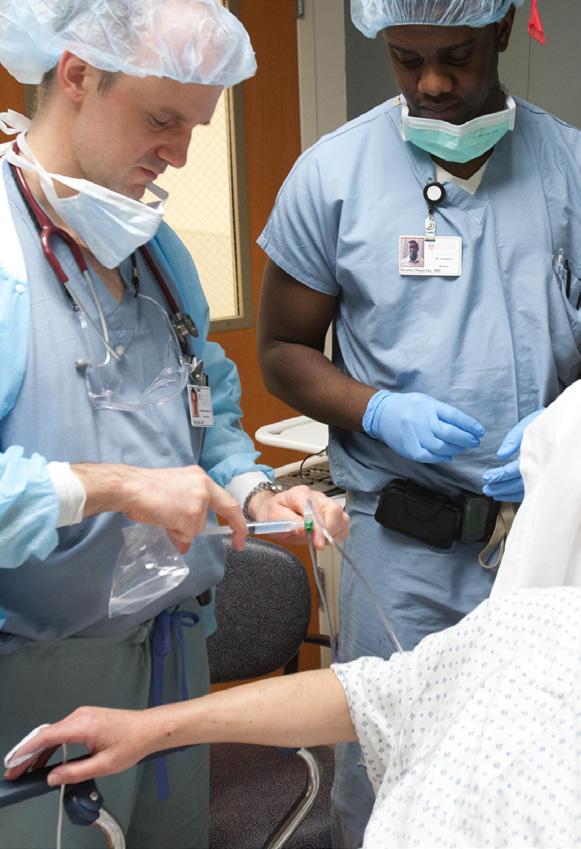
• Group On-Demand
• Organization Download
• Single On-Demand Video
• DVD
Minimize the risks and assure patient safety with proper training in moderate sedation.
NOVEMBER/DECEMBER 2014 COMMONSENSE 17 AAEM NEWS
today asahq.org/sedation2014 Call: (847) 825-5586 | Promo Code: EM2014 14-051
Order
Medical Liability and the Emergency Physician: The Final Summary
Gregory Roslund, MD FAAEM Legal Committee
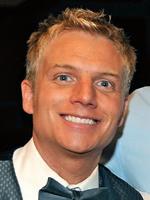
I have practiced in three vastly different medical liability environments, as my medical career has taken me from Chicago to South Bend to Dallas. For more than a year now, on behalf of AAEM’s Legal Committee, I have been on a quest to understand our medical liability labyrinth. My goal was to construct the most accurate and comprehensive medical liability database ever for emergency physicians. My detailed report on all 50 states has now been completed, published in Common Sense in four installments (in the Jul/Aug 2013 issue and the Jan/Feb, Mar/Apr, and May/Jun 2014 issues). That series of articles attracted a lot of attention, and I was even invited to write a version of this summary for Emergency Physicians Monthly, which appeared in its July issue (Vol. 21, No. 7). I learned a lot in researching and writing these articles, and they generated many insightful questions and inquiries from friends, colleagues, and Common Sense readers. I would now like to answer some of those questions and summarize what I learned.
1. What constitutes a good liability environment for emergency physicians?
As an emergency physician in the trenches, the first answer that comes to mind is “an environment in which all plaintiff attorneys have been exterminated and physicians are completely immune from civil suit or criminal prosecution,” but that is neither practical nor moral. We all know that on very rare occasions negligence does occur — although not nearly as often as the American Trial Lawyers Association has led the public to believe.93,94 So part of what makes an environment ideal is that meritorious cases are quickly identified and patients who are truly victims of negligence are compensated fairly, quickly, and efficiently — meaning that most of the money in the damage award actually goes to the injured plaintiff/patient.
While some states are getting it right, the United States as a whole has a malignantly unfair and unpredictable medical liability environment. Our profoundly aberrant medical-legal system rewards patients who have suffered bad outcomes rather than patients who have been harmed by negligence.93,94 Any bad outcome can result in a lawsuit that has a fair chance of ending successfully for the plaintiff, even if the defendant physician did everything right.
Given that injustice, the remaining factor that would establish an ideal medical liability environment is that physicians cannot be successfully sued unless they have actually done something wrong. If all parties (lawmakers, physicians, patients, lawyers) would strive to build an environment with this goal in mind, non-meritorious suits would be quickly dismissed and the stress and cost associated with litigation would be substantially reduced. Insurance premiums and wasteful defensive medicine would decrease. This would improve the quality of life for physicians thanks to decreased litigation stress, more money, heightened morale,
and the ability to practice good medicine without being defensive. Patient safety would improve as states had an easier time recruiting and retaining doctors, resulting in greater access to physicians — especially those performing high-risk procedures.
Theoretically, states that have enacted laws to reduce unreasonable litigation (expert witness reform, case certification requirements, medical review panels, etc.) and curb excessive damage awards (caps) should have the most favorable environments, with physicians paying the lowest annual premiums. However, this is not always the case. The relationship between tort reform, malpractice costs, and the overall medical liability environment is complex and nonlinear. A state’s culture can overwhelm tort reform laws favoring physicians, or can protect physicians despite the absence of tort reform. Simply put, good tort reform on paper is not equivalent to a good medical liability environment.
2. Which states have the best medical liability environments for EPs? Which states have the worst? Which states are on the “watch list”?
The best states are California, Colorado, Kansas, and Texas. All four have enacted a reasonable cap ($250k–$300k) on non-economic damages.3 Litigation in these states has markedly decreased over time and annual malpractice premiums for physicians remain low.12,13,31,35 Following close behind are Indiana (which long ago implemented a $1.25 million cap on total damages and a pre-litigation screening panel process), Alaska, North Carolina, North Dakota, and South Dakota (all have implemented caps on non-economic damages of $500k or less).3 The majority of these states have some of the lowest annual medical malpractice payouts per capita.36
The worst states include Illinois and a cluster of states on the east coast: New York, D.C., Pennsylvania, New Jersey, and Delaware. In these states litigation is frequent and malpractice premiums are debilitating. OB-GYNs and surgeons in New York City and Philadelphia pay more than $100,000 per year.31 These states have some of the highest annual malpractice payouts per capita and meaningful tort reform is nonexistent.3,36 States to watch include:
• California: MICRA has been credited with reigning in health care costs.12,13 A ballot initiative is underway to index the state’s cap on non-economic damages to inflation (the $250,000 cap would be increased to $1.1million). This initiative, coupled with physician drug testing in an effort to disguise the effort as a patient safety issue, is receiving significant support from trial lawyers and consumer groups.73
• Kentucky: Known for a paucity of tort reform, KY may be turning the corner. The state senate recently passed a bill creating threemember expert pre-litigation panels to review malpractice suits before they are pursued in court.71
Continued on next page
18 COMMONSENSE NOVEMBER/DECEMBER 2014 AAEM NEWS
• Missouri: The Show-Me state’s medical liability environment has tragically collapsed since the state’s high court ruled its damage cap unconstitutional in 2012. As lawmakers work to reinstate the cap, will Missouri docs hop across the border to physician-friendly Kansas?74
• Florida: This litigious state continues to overturn the medical liability reforms that it once passed into law. In a recent landmark case, the state Supreme Court voided Florida’s caps on non-economic damages in wrongful death cases. This will undoubtedly deteriorate what is already a beleaguered medical liability environment.69
• Georgia: Once heralded as the best medical liability environment for EPs in the country, damage caps were overturned in 2010. Georgia enacted a formidable expert witness reform package in 2005, and both raised the burden of proof and redefined medical malpractice for cases taking place in an emergency setting. Plaintiffs must prove by “clear and convincing evidence” that the medical provider was “grossly” negligent. Despite these physician-friendly laws, in a recent GA case involving the death of a 15-year-old patient due to a missed pulmonary embolism, two emergency physicians who are well known pillars of our specialty testified that the treating physician was guilty of gross negligence rather than simple or ordinary negligence (the usual definition of malpractice). While this case is not over, these recent events have certainly undermined a state law that was designed to protect physicians forced by EMTALA to provide care in an emergency setting. Even scarier, any physician found guilty of gross negligence can lose hospital privileges and be barred from obtaining malpractice insurance.70,73,75
• Massachusetts and Oregon: Both states have recently initiated avant-garde processes known as “D,A, and O” (Disclosure, Apology, and Offering).58 Similar to early arbitration in other states, these
Carry Your Expertise in Your Pocket
Procedural Sedation and Advanced Resuscitation Expertise Card
AAEM believes that by achieving and maintaining your EM board certification through ABEM or AOBEM, you have acquired expertise in procedural sedation and pediatric, trauma, neurological, and cardiac resuscitation. Access and download your card from your AAEM member account www.aaem.org/member-center
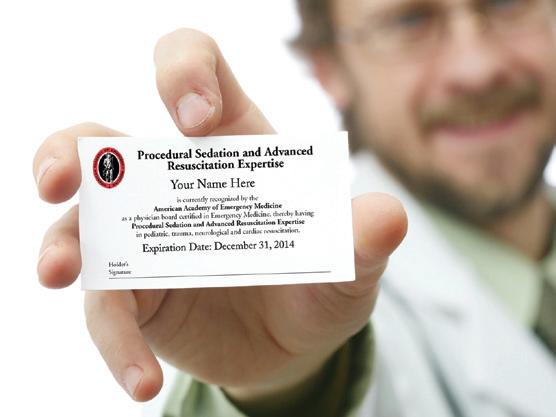
initiatives focus on early disclosure of mistakes, apologizing when appropriate, and offering up-front compensation in an effort to avoid costly and time-consuming litigation.58
3. Which states have seen the most change in recent years and why?
• Texas: The poster child for tort reform. Litigation, paid claims, and premiums have been slashed in half after sweeping reforms were passed in 2003. Applications for Texas medical licenses have surged and the annual malpractice payout per capita ($3.03) is now the lowest in the country.68
• Ohio: Litigation has dropped 41% statewide following the enactment of reforms in 2004.66
• Pennsylvania: Reforms were passed in 2003, including a case certification requirement and venue reform.63 In the last ten years medical malpractice case filings have decreased 44% in the state and 65% in Philadelphia, although Philadelphia remains a very dangerous place to practice medicine.63 A 65% decrease isn’t as meaningful when the starting point is so bad.
• Mississippi: Since passing strong reforms in 2004 (a hard $500,000 cap on non-economic damages and a case certification requirement), liability insurance costs have dropped nearly 50% and the number of lawsuits has fallen 70%.35
• North Carolina: The state passed vigorous reforms in 2011 (a $500,000 cap on non-economic damages and an enhanced burden of proof for EMTALA providers).35 North Carolina’s annual per capita malpractice payout ($4.55) is now the seventh lowest in the nation.36
4. Which reforms have had the greatest impact?
There are significant data to support the efficacy of a hard cap on noneconomic damages.76,77,78 Twenty-five states currently implement a cap on non-economic damages (although Florida’s cap is in the process of being overturned).3 A cap of no more than $250k is most closely tied to good liability environments (Texas, Alaska, California, and Kansas). The benefits of a cap are significantly diminished if it allows too many exceptions (e.g., “does not apply in cases of debilitating injury”), if it is adjusted annually for inflation (Maryland), if it is increased in cases with multiple defendants (South Carolina), or if it is set too high to have an impact (Tennessee).3
Twenty-four states are currently implementing a case certification mandate, which requires the plaintiff to provide a signed statement from a qualified expert, typically before or within 60 days of filing suit.8 This has been credited for reducing the volume of frivolous lawsuits in many states, such as Pennsylvania and Tennessee.63
Nineteen states currently use a pretrial review panel (mandatory in 14 states, optional in five). Most states allow cases to move forward in the courts despite a panel ruling in favor of the defendant, while in some states the panel’s findings are not admissible in court. Pretrial review panels have been criticized for the length of time it takes to come to a decision. In Indiana the average is four years.23,24 This negatively impacts both patients who are victims of negligence and physicians who have been wrongly accused and continue to suffer from litigation stress. Based
NOVEMBER/DECEMBER 2014 COMMONSENSE 19 AAEM NEWS
Continued on next page
on my own experience in Indiana, where I sat on both sides of the panel, the law is effective in weeding out frivolous claims and reducing practitioner fear.
5. Which reforms have had the least impact?
• While Apology Laws are well meaning, their impact is unclear and likely to be minimal.
• Alaska is the only state to have a “Loser Pays” law in the books. The rule is applied to no more than 20% of the winner’s fees and is actually collected in a minority of cases.27
• Five states currently implement a cap on total damages. In Virginia the $2 million cap (increased annually) is simply too high to be effective. In other states such as Nebraska, which has higher than average awards/settlements, plaintiff attorneys seem to push awards for pain and suffering close to the $1.75 million cap.3
• While expert witness reform is a vital piece of the tort reform package, I am amazed at how many states get it wrong. Ideally, an expert witness is a physician in active clinical practice, board certified in the same specialty as the defendant, and practicing in the same state.
• Very few states require all these things, and even worse are the loopholes contained in these laws. For example, Pennsylvania law says that “expert testimony is required to establish the requisite standard of care, unless negligence is obvious to a lay person” and “the court can waive this requirement if the expert has sufficient training, experience, or knowledge as a result of active practice or teaching within five years prior to the incident.”8 This opens the door for any doc with a pulse to testify.
• To quote my AAEM colleague Andy Walker, there are three types of plaintiff’s experts who testify against emergency physicians:
(1) the prostitute who will say anything for money, (2) the non-EM specialist blinded by ignorance or arrogance or both, and (3) the well-meaning EP who either doesn’t understand “negligence” and
“standard of care” or cannot get past his own hindsight bias. The third type is impossible to police even with fabulous expert witness requirements.80 I would love to see a law that requires expert testimony to be reviewed by the respective specialty’s professional organization before being used in court. Or, to prevent some experts from selling their souls, cap expert witness fees at 1.5 times the hourly rate for the specialty’s clinical work.
6. Do laws specifically protecting EPs and others bound by EMTALA have a protective effect?
Eight states have passed laws that specifically protect emergency physicians and other specialists taking call and bound by EMTALA to provide care. These laws include an enhanced burden of proof (plaintiffs must prove “gross” negligence by “clear and convincing evidence”) in Georgia, South Carolina, North Carolina, Utah, West Virginia, and Texas; and lower caps on non-economic damages in Florida and Nevada.8,35 These laws have been passed only in the last ten years, so it is too soon to determine their effect. In Utah the law does not apply if the physician has access to the patient’s medical record.79 I am told by EPs working in Georgia that these laws have improved their quality of life and their ability to recruit and retain physicians. And, the practice of defensive medicine has decreased to some degree. I do know of one case in which this Georgia law helped an EP, but the law is being challenged (Johnson vs. Omondi).19,70,73,75
7. How does one rationalize the weak correlation between malpractice premiums and tort reform?
Intuitively, states with tort reform should see a decrease in litigation and ultimately a decrease in malpractice premiums. However, this relationship is far from linear. A state’s culture evolves over hundreds of years and becomes firmly established. States as a whole are slow to change, and with many reforms being new it may take decades for these laws to have an impact. In simpler terms, if the public is accustomed to suing and lawyers
Continued
Begin Your Physician Leadership Training Today!
As an AAEM member, you can take advantage of quality physician leadership educational materials from the American College of Physician Executives (ACPE) at their member rate!
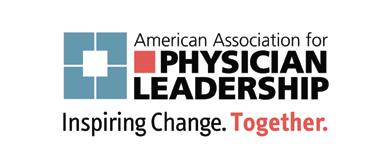
AAEM members can take advantage of:
• Online products: faculty-led or self-study
• Masters Programs: MBA, Medical Management, Patient Safety in Health Care
• Specialty Certifications, including Health Information Technology
20 COMMONSENSE NOVEMBER/DECEMBER 2014 AAEM NEWS
Log in to your AAEM members’ only account,
to set up your ACPE account and get started today!
www.aaem.org/myaaem,
• Four live ACPE meetings a year on next page
are accustomed to aggressively pursuing cases, that may go on for years regardless of the obstacles placed in their way. In some states litigation has decreased, but because reforms are so new, premium dollars are still being paid on cases that were settled years ago. This may explain states with good reforms and relatively high premiums such as Ohio, Georgia, Utah, West Virginia, and Massachusetts.31
If litigation has decreased and previous settlements have been fully paid but premiums still remain high, then we must point our fingers at insurance companies reaping excessive profits. This may apply to Nevada, which has great reform on paper and one of the lowest annual per capita payouts, suggesting low litigation costs throughout the state, but high malpractice premiums that average around $47,250 and are much higher in Las Vegas.36,31
8. State law vs. state culture - which one more strongly influences a state’s medical liability environment?
Without a doubt, it is state culture. Minnesota is devoid of tort reform, yet physicians pay some of the lowest malpractice premiums in the country. I once asked a Minneapolis colleague why this is so, and he replied, “People here don’t sue. Some call it ‘Minnesota nice.’”32 The average malpractice premium in Minnesota is estimated at $8,500, while the average premium in Florida is estimated at $79,000! Why such an astronomical difference? Do Florida doctors make more mistakes than those in Minnesota? Of course not. In fact, Florida physicians are probably less risk tolerant and practice medicine more defensively. There are approximately 4,000 emergency physicians in Florida. If they could pay what a Minnesota emergency physician pays for insurance, each year they would save $70,000 per doc — for a total of $280 million! Where does that $280 million come from and where does it go? EPs in both states earn approximately the same compensation. However, Medicare spending is $6,911 per capita in Minneapolis and $13,824 in Miami.81 Put another way, each year we taxpayers make a $280 million donation to Florida’s trial lawyers.
The bottom line: It’s not about justice. It’s not about good medicine. It’s about money for lawyers.
9. Does tort reform improve an emergency physician’s quality of life?
In my experience, in states where tort reform has been successfully upheld emergency physicians do enjoy a higher quality of life. On one of my shifts during residency in Chicago, I encountered a young pregnant patient with a hip dislocation. While this is a challenging, high-risk case in any environment, in Chicago — possibly one of the most litigious and physician-unfriendly cities in the country — it was an absolute nightmare. The hours that followed involved a toxic game of hot potato between the ED, the trauma service, anesthesiology, OB-GYN, and administration. At first I couldn’t even convince an attending to staff the case with me and put his or her name on the chart. The message was clear. No one wanted to assume the risk. Who loses in these situations? The patient.
While I absolutely loved my residency, working in a painfully broken medical liability system was challenging — even miserable at times. Despite being the busiest trauma center in Illinois, we repeatedly lost pediatric neurosurgery and orthopedic coverage. These well-meaning specialists
simply couldn’t afford the insurance coverage that came with practicing in Chicago. My attendings clearly feared litigation, and for good reason. One of my medical school OB-GYN attendings, who wrote many of the chapters in our textbook, told me about all the cases he was forced to settle despite being right, because it was less expensive for his insurance carrier to settle than defend. I watched EPs in Chicago endure not only excess risk and stress but also deficient compensation, because so much of their revenue went to lawyers via insurance premiums. State politicians never intended to make the situation any better, and physician morale was low.
In 2006, as a newly minted attending, I moved across the border to Indiana — a tort reform state since the 1970s. My malpractice premiums were so low I paid them out of pocket. Many of my partners had trained in the state and their risk tolerance was incredible. I realized that I could simply use good common sense. Bad outcomes and occasionally even lawsuits still occurred, but thanks to Indiana’s Medical Review Panel — the hallmark of the state’s tort reform package — most of these cases “died in panel” after being reviewed by other EPs. Despite being in a smaller community, specialty coverage was never an issue. The docs in the community were relaxed, happy, and well paid. Physician morale was high. In 2012, I moved to Texas, another tort reform state with a phenomenal medical liability environment, and I’ve experienced the same benefits as in Indiana.
10. Does tort reform decrease overall health care costs?
This is a complicated question, but unfortunately, here in Texas the answer is no. The Lone Star State’s dynamite 2003 reform package has accomplished a lot, but it has failed to curb the practice of defensive medicine. While tort reform should increase a physician’s risk tolerance, it often doesn’t. Fear lingers on. I see it every day in the practice patterns of my partners, many of whom trained locally in the 80s and 90s when Texas was one of the most litigious and unjust states in America. Once ingrained, CYA patterns are rooted deep and will take decades to correct. On a personal note, as a Texas EP I don’t fear bad outcomes as much and I think I discharge more and CT less, but I’m sure there are times my decisions reflect my Chicago roots, where every patient was viewed as a lawsuit in the making. The proof is in the pudding - overall health care spending in Texas has not changed since the implementation of tort reform and Texas spends more per Medicare patient than the national average.68
11. So what do I do if I’m in a lousy state?
Will tort reform ever be successful in Illinois? Sadly, probably not. The same can be said for Florida, New York, and many more. So now what? You can vote with your feet and move — though I realize it’s not always that simple. While an area’s medical liability environment is a significant factor in deciding where to live and practice, I don’t want to diminish the importance of family proximity and other factors. For a variety of reasons, some physicians must practice in high-risk environments. Unfortunately, that’s one of the reasons why things remain the way they are. Places like NYC and D.C. are popular, and there is no shortage of well-trained emergency physicians there despite the legal climate.
NOVEMBER/DECEMBER 2014 COMMONSENSE 21 AAEM NEWS
Continued on next page
Alternatively, learn to adapt. Lots of docs live and work in high-risk environments and still have fulfilling careers. Many of my former Chicago colleagues have been there for 10-20 years and have never been sued. They practice defensively and focus on meticulous documentation and good communication. Many of these physicians work at big medical centers where their employer pays their malpractice premiums, so they never see the bills and don’t even know the cost.
12. I want to attempt tort reform. What should I try?
What reforms support the “ideal medical malpractice environment?” The most effective reforms halt non-meritorious lawsuits early in the process. Examples include case certification requirements and medical review panels. Indiana has used a medical panel review process for over thirty years. The panel consists of three physicians selected from a pool of volunteers who practice in the same specialty as the defendant physician. I served on the panel on four occasions during my six years of practice in that state. The process is highly objective and enormously beneficial for all involved. Both sides benefit from the expertise of three neutral specialists not paid by either side. Contrary to the prostitute-like fees that are often paid to hired-gun experts, Indiana panelists are paid $350 per panel appearance and each side pays half. While some advocacy groups argue that physicians serving on the panel are just looking out for their buddies, records show that the panel finds negligence 20-30% of the time.95 Although the panel process often prevents a trial — many cases are dropped or settled based on the panel’s findings — the panel’s decision is not binding and plaintiffs may push the case further. However, they historically have little chance of winning if the panel has found in the defendant’s favor. One major criticism of the panel is that, on average, it takes three to four years from the time the complaint is filed to receive a final panel opinion. The reasons for this are unclear, but one hypothesis is that attorneys on both sides have a financial motive to go slow, as they bill for all the meetings, phone calls, and depositions associated with the pre-panel process. Another limitation is that any case involving damages of less than $15,000 does not get a panel review. All things considered, the panel process is a win-win for both plaintiffs and defendants, and it
may be the best option as you consider where to direct your lobbying efforts. The process is inexpensive and relatively easy to recreate — Kentucky recently passed a law implementing a panel process modeled after Indiana’s.
When it comes to Texas reform, the state’s $250k cap on non-economic damages receives all the attention. However, a significant component of Proposition 12 was the expanded role of the Texas Medical Board (TMB).96 Beginning in 2003, the TMB began to handle the majority of cases involving alleged physician negligence. Similar to the medical review panel in Indiana, Texas utilizes its medical board (comprised of volunteer physicians receiving modest fees) to investigate and discipline physicians accused of malpractice. In fact, many plaintiff’s attorneys ask patients seeking damages to first file a complaint with the medical board. These attorneys then make their decisions on whether or not to proceed with the case based on the TMB’s response. Moving forward, I would love to see other state medical boards step up to the plate and take control of these issues.
13. I live in one of the good states. What’s next?
Be grateful, but realize that your job is not done. Sadly, there is no time to rest. Many “haters” are eager to prey on you. For example, Indiana’s cap on total damages was recently challenged.26 Numerous advocacy groups are fighting to overturn the Texas reforms, claiming the $250,000 cap on non-economic damages is preventing injured parties from finding an attorney willing to take the case.68 (And all this time I thought lawyers were more interested in justice than money!)
Increase your involvement in organized medicine, especially AAEM. Start a chapter if your state doesn’t already have one. Protect the policies your colleagues have worked long and hard to establish, and keep fighting the good fight!
To view the full Medical Liability State by State series and for a full list of references, please visit www.aaem.org/publications/common-sense/ medical-liability-state-by-state ■
22 COMMONSENSE NOVEMBER/DECEMBER 2014 AAEM NEWS
AAEM Award & Election Nominations! CALL FOR DEADLINE:DECEMBER 1, 2014, 11:59pm CST www.aaem.org/about-aaem/awards www.aaem.org/about-aaem/elections.
AAEM & AAEM/RSA
Now Accepting 2015 Award Nominations
AAEM and AAEM/RSA are pleased to announce they are currently accepting nominations for annual awards. Award presentations will be made to the recipients at the 21st Annual Scientific Assembly to be held February 28-March 4, 2015, in Austin, TX. The deadline for nominations is 11:59pm CST, December 1, 2014.
Full descriptions of awards and the required online nomination form are found at:
www.aaem.org/about-aaem/awards
The AAEM executive committee will review the nominees and select recipients for the following awards:
Administrator of the Year Award
David K. Wagner Award
Peter Rosen Award
Young Educator Award
Joe Lex Educator of the Year Award
Resident of the Year Award
James Keaney Award
Master of the American Academy of Emergency Medicine (MAAEM)
The AAEM/RSA board of directors will review the nominees and select the recipient for the following award:
Program Director of the Year Award
Please contact AAEM and AAEM/RSA if you have any questions. 800-884-2236 • Fax: 414-276-3349
info@aaem.org
• info@aaemrsa.org
American Academy of Emergency Medicine 2015 Elections
AAEM encourages candidates for election to the board of directors who have a previous record of service and commitment to the Academy.
Five At-Large positions on the AAEM board of directors are open as well as the Young Physicians Section (YPS) director position. Any Academy member may nominate a full voting or YPS member (for the YPS director position only) for the board. Self-nominations are allowed and encouraged. You must be a YPS member to be eligible to run for the YPS director position.
Elections for these positions will be held at AAEM’s 21st Annual Scientific Assembly, February 28-March 4, 2015, in Austin, TX. Although balloting arrangements will be made for those unable to attend the Assembly, all members are encouraged to hold their votes until the time of the meeting.
The Scientific Assembly will feature a Candidates Forum, in which members will be able to directly question the candidates before casting their ballots. Winners will be announced during the conference, and those elected will begin their terms at the conclusion of the Assembly.
In order to nominate yourself or another full voting member for a board position, please complete the nomination form found at:

www.aaem.org/about-aaem/leadership/elections
All candidates will need to complete the attestation statement and other forms found on the link above.
Candidate statements will be featured in an upcoming issue of Common Sense and will be sent to each full voting and YPS member.
These nomination and election procedures are what set AAEM apart from other professional medical associations. We believe the democratic principles that guide them are one of AAEM’s greatest strengths and are an integral part of what makes us the organization of specialists in emergency medicine. In AAEM, any individual, full voting or YPS member can be nominated and elected to the AAEM board of directors.
Self-nominations

Complete nomination criteria and the required online nomination form are found at www.aaem.org/about-aaem/awards.
are not accepted.
AAEM-0814-349 Nominations Deadline: December 1, 2014 — 11:59pm CST
Eliminating Triage: Redesigning the Front End of the Brigham and Women’s Hospital ED
Joshua M. Kosowsky, MD FAAEM
Ali S. Raja, MD MBA MPH FAAEM
Five years ago the Brigham and Women’s Hospital ED embarked on a major redesign project. Applying Lean methodology, and with the support of institutional leadership, our team set out to improve the patient experience in our ED — starting with arrival at our front door. After thousands of hours dedicated to designing, testing, and implementing new models of patient flow, we were able to achieve dramatic reductions in wait times along with best-in-class performance for patient satisfaction. More remarkable still, despite ever-growing volume and acuity and an increasing burden of inpatient boarding, our ED has been able to sustain these improvements over time.
In 2009 the average length of stay in our urban, level-1 trauma center exceeded five hours. Our patients spent the first hour navigating triage and registration, waiting all the while to see a provider. Our walkout rate was over three percent and patient satisfaction ranged from the 4th to the 16th percentile among similar-sized academic medical centers. A consultant’s analysis in 2007 determined that the existing ED footprint of 19,000 square feet was nearly 50% too small for the patient volume (57,000 visits per year at that time), even without the boarding of admitted patients, who remained in our ED for more than 2,000 bed-hours per month. In the wake of the market crash of 2008, plans for a $50,000,000 expansion were shelved and instead the ED was charged with developing a more efficient model for patient throughput.
We decided to begin by analyzing our key metrics and their patterns. We also visited best-in-class facilities to learn from them and discover which processes we might adapt to our setting. We recruited staff throughout the ED to join in facilitated sessions to design the ideal patient experience. Teams experimented with new models of patient flow in tabletop simulations, and then went on to test each piece in the live care environment.
We began by thinking of the typical ED visit in terms of front-end, middle, and back-end processes. We conceptualized the front end as everything occurring prior to the patient being seen by a provider: arrival, registration, triage, bed assignment, etc. The middle portion is where the bulk of care is delivered, including clinical assessments, diagnostic testing, procedures, consultations, and medical decision making. Finally, the back-end processes have to do with discharge and admission, including the boarding of inpatients. It was the back-end — the inability to move admitted patients out of the ED — that was the most obvious bottleneck to patient flow, but it was also the piece that was most unpredictable (depending on day-to-day hospital occupancy) and over which we in the ED had the least control.
Furthermore, for the 75 to 80 percent of patients treated and discharged solely by our ED team, there remained an urgency to do something The middle portion of the ED visit, representing on average the longest interval of time, was also extraordinarily variable from patient to patient. No single intervention (e.g., improving laboratory turn-around time) would
necessarily have a large impact on overall throughput. An “effort-impact” analysis concluded that the greatest single opportunity for streamlining care was at our front-end. Not only did our front-end touch virtually every patient, but it was a process entirely within our own control.
What we found when we drilled down was that, like many traditional ED models, our front-end was riddled with needless redundancy, serial processing, and bottlenecks. Depending on the patient’s complexity triage often took more than 15 minutes, but without triage it didn’t seem safe for patients to proceed to registration and bed assignment, both of which might take considerable additional time.
We developed process improvement work-groups. These were designed to engage Lean practitioner champions, front-line staff, and key stakeholders in table-top sessions and rapid-cycle testing. Over the course of several months our new front-end model emerged.
Beginning at arrival, a quick check-in replaced full registration, deferring the latter to the bedside. Full registration was a multi-step process, entailing as many as 35 separate questions and often taking upwards of ten minutes to confirm everything from demographic data and insurance status to information about next of kin and religious preference. Traditionally, all of this is done at the front-end in an effort to obtain accurate patient information prior to treatment. At the same time, however, patient safety (and EMTALA) require that patients be screened clinically — hence the need for comprehensive triage prior to registration. By paring down the check-in process to the minimum number of questions required to accurately identify the patient (e.g., name, date of birth, medical record number, etc.), patients were moved rapidly and safely to the treatment area where remaining questions were answered after patients were evaluated, either just prior to discharge or during a period of idleness in the ED visit.
Triage was also changed. Triage has always played an important role in determining where — and in some cases by whom — a patient would be seen in the ED. For obvious reasons, EDs must be prepared to accommodate a range of patient severity and a variety of types of specialty care. Historically, all but the smallest EDs achieved this by segregating different populations to different areas: trauma bays, critical care areas, cardiac monitoring units, specialty treatment rooms (OB/GYN, orthopedics, ENT, ophthalmology), pediatric units, psychiatric holding areas, etc. There might also be a fast-track for minor problems that don’t require much at all in the way of emergency treatment. In fact, in the days before emergency medicine was a full-fledged specialty it was often the triage nurse who determined the specialty or subspecialty need and who would call the appropriate consultant to see the patient. The ED was often staffed by an in-house resident or moonlighting physician with no specific emergency medicine training, whose charge was essentially to keep the patient stable until the “real doctor” could be summoned. Triage thus played a critical role in terms of both patient flow and patient safety.
24 COMMONSENSE NOVEMBER/DECEMBER 2014 AAEM NEWS Continued on next page
Premier Educational Opportunities
We provide affordable,



continuing medical education in emergency medicine in person and online.


Now most EDs are staffed by full-time emergency physicians and nurses whose training and practice reflect the motto “any patient, anytime, anywhere.” The segregated model of care now makes less sense and the division of patients into separate streams creates more opportunities for bottlenecks and supply-demand mismatches. For example, if there happen to be more patients who need monitors than there are monitored rooms, patients are going to wait. At the same time, if there are no fasttrack patients in the ED at a given time, then that area may sit idle even though other patients are waiting for care. Prior to our redesign we found this to be the case on most busy days — we had patients in the waiting room even when we had open beds, because we didn’t have the right bed for the right patient.
The other disadvantage of our segregated model was that it placed a heavy premium on getting triage right in the first place. We had an “acute pod,” an “urgent pod,” a small fast-track, and a handful of specialty treatment rooms — each set up and staffed differently. Our expert triage nurses almost always made the right call as to who was sent where (after all, the ESI triage score was developed in our ED), but on the rare occasion a patient was mistriaged the consequences could range from inconvenience to endangerment. Because of this, a careful triage nurse spent as much time as required to get it right. Patients found it unsettling to provide a detailed history at triage, only to repeat the process when they were brought back to the treatment area, but from a process standpoint this redundancy was unavoidable as long as we segregated patients by potential specialty need and acuity.
• Foremost clinical conference in EM: the AAEM Annual Scientific Assembly. Registration is FREE for members with a refundable deposit.
So, with both efficiency and patient experience in mind, our department committed to the principle of “any patient, any bed.” We retrofitted our clinical pods with universal equipment, remote monitoring, and portable carts for specialty care. We reconfigured our staffing patterns so that provider coverage and nursing ratios would be more-or-less consistent throughout the ED. And, in early 2010, we began implementing “any patient, any bed” on a consistent basis. Of course there are still very specific populations that we prefer to care for in particular locations, such as major trauma in our trauma bays and severely agitated behavioral patients in our seclusion rooms. However, for more than 90 percent of our patients the principle is upheld.
Once we stopped segregating patient flow, we saw an immediate reduction in wait times. Nevertheless, there remained a sense that there was value in having an experienced triage nurse set eyes on a patient before assigning them to a bed, especially given the potentially time-sensitive conditions (e.g., STEMI, stroke, sepsis) seen in any ED. It takes only a minute or two for an experienced nurse to recognize one of these true emergencies and activate the appropriate response, but without this step patients might fall through the cracks. Thus, we replaced routine triage with a 90 second “rapid assessment” consisting of a one-line chief complaint, a visual assessment of the patient’s condition, and a set of initial vital signs. This process proved to be not only safe and reliable (during testing, all patients subsequently assigned to ESI categories 1 or 2 were identified by this assessment), but also a tremendous patient satisfier, meeting patients’ expectations to be greeted by an individual with clinical expertise and at the same time expediting throughput to definitive care.
NOVEMBER/DECEMBER 2014 COMMONSENSE 25 AAEM NEWS
Continued on next page
Thank you for being a part of AAEM. Your membership demonstrates your commitment to the future of emergency medicine. Continue to take full advantage of your member benefits by renewing today. Visit www.aaem.org/renew Call 800-884-2236 Email info@aaem.org RENEW TODAY! www.aaem.org/renew
Highly recommended Oral Board and
Courses
•
Written Board Review
AUSTIN TEXAS
high-quality
HILTON AUSTINAUSTIN, TX FEBRUARY 28 – MARCH 4, 2015 • VIIIth
Emergency Medicine Congress • NEW: Online Learning Library – AAEM’s exceptional educational content is now available online with CME options. www.aaem.org/education/online-learning-library September 2015 ROME, ITALY MEDITERRANEAN EMERGENCY MEDICINE CONGRESS www.aaem.org/education/memc NEW! Receive CME credit anywhere, anytime. Start today! AAEM Online Learning www.aaem.org/oral-board-review AAEM Written Board Review Course Unmatched Preparation for the Qualifying Exam and ConCert Exam www.aaem.org/written-board-review AAEM PEARLS of WISDOM ORAL BOARD REVIEW COURSE
Mediterranean
Having eliminated some major bottlenecks to patient flow, we discovered that much of the hesitancy around abandoning traditional triage dissipated. After all, one of the implicit functions of triage was to determine how long patients could safely wait before being seen by a provider. When most patients are not waiting to be seen at all, this task is no longer necessary.
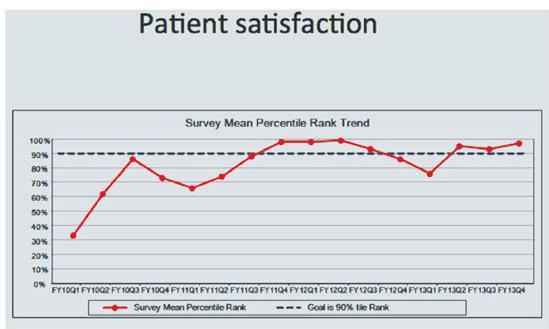
Still, the direct-to-bed process works only so long as there is space available to accommodate the next arriving patient. What happens when there is no space? We are not the only ED to face this challenge, particularly during peak hours when admitted patients are awaiting inpatient bed placement and new patients are still arriving at a steady clip. The new space we were allocated was not sufficient to accommodate another pod of patients, so we decided to make a bold move: convert our existing waiting room and triage area into new clinical space. Indeed, if our objective was to eliminate wait times and triage, we were confident that we could put the space to better use. And so, in mid-2011, we repurposed the majority of our waiting room and triage area into a new pod with 12 treatment bays.
Even with the additional space, we had to redesign work-flow in our ED to sustain the direct-to-bed process. We couldn’t afford to fill all the beds in our ED pods every morning, only to revert to our old model of triage and waiting every afternoon. Instead we adopted “a bed ahead” concept, whereby the lead nurse and attending physician in each pod were charged with anticipating the next patient and identifying where that patient would be cared for at all times. During the busiest times of day that might be a virtual bed, but the exercise of staying a bed ahead promoted communication, an interdisciplinary focus on disposition, and sometimes the creative use of space in hallways.
We felt oversight of this process was essential, so we created the role of “flow manager” to help promote throughput within the pods and to troubleshoot potential bottlenecks. Reporting directly to both our nursing director and medical director, the flow manager is an on-the-ground presence in our ED from 8:00 a.m. until midnight. He or she rounds at regular intervals with the attending physicians and lead nurses in each pod, to identify barriers to throughput and help provide solutions. If a pod lacks the resources to stay a bed ahead, the flow manager is immediately notified and will provide that pod a reprieve from new patient arrivals as resources are redistributed. If all pods are in crisis the flow manager — and only the flow manager — can make the decision to have the ED “go into queue,” temporarily reverting to traditional triage and waiting until we can safely resume the direct-to-bed process. Absent extreme inpatient boarding, we have found that our system can handle up to the 95th percentile for volume without having to revert to triage.
From October 2010 to September 2012, we exceeded our project goals, while patient volume increased to over 60,000 visits annually. Median
door-to-provider time declined by 80 percent and more than half our patients were seen within ten minutes of arrival (Figure 1). Total length of stay fell by 30 minutes, the majority of which was accounted for by a decrease in waiting time at the front end. Our walk-out rate fell from above three percent to below one percent. In the fourth quarter of 2011 patient satisfaction climbed to the 99th percentile, and has remained at or above the 90th percentile for eight of the last ten quarters (Figure 2). Perhaps most striking has been the response of individual patients, many of whom have written to us about the dramatic improvement.
ED overcrowding remains a challenge, largely due to the boarding of inpatients, and on our busiest days we are forced to revert to the more traditional waiting/triage model. However, by focusing on the patient experience and involving staff in the design, testing, and implementation of new processes, we were able to achieve a transformation in ED care without a major facility expansion. ■

26 COMMONSENSE NOVEMBER/DECEMBER 2014 AAEM NEWS
Figure 1
Figure 2
United States Department of Justice Settles Seven Whistleblower Lawsuits Brought Against Community Health Systems, Inc. for Over $98 Million
Jim Strafford, CEDC MCS-P
To my knowledge, Common Sense has never before published a press release from an attorney’s office. I chose to run this one (after slight editing) for several reasons. First, because almost every time you see a story in your local paper about a malpractice suit against a physician or hospital, it is not the product of investigative journalism. It comes from a press release written by the plaintiff’s attorney and is usually edited lightly or not at all by the paper before publication. That’s why those news stories are so plantiff-friendly and hostile to the defendants. Sometimes the press release is published before the defendant doctor or hospital is even aware of the lawsuit. You should be aware of that when you read such articles in your newspaper, and the same is true when you read a news story about a plaintiff who wins a malpractice suit. The story is almost always based on a press release written by the plaintiff’s lawyer, and serves mainly as free advertising for the attorney.
Second, you should be familiar with the concept of a qui tam suit and the False Claims Act, since many emergency physicians may be in a position to act as plaintiffs in such suits, or “relators.” According to Wikipedia (http:// en.wikipedia.org/wiki/Qui_tam):
In common law, a writ of qui tam is a writ whereby a private individual who assists a prosecution can receive all or part of any penalty imposed. Its name is an abbreviation of the Latin phrase qui tam pro domino rege quam pro se ipso in hac parte sequitur, meaning “[he] who sues in this matter for the king as well as for himself.”
As well as:
The False Claims Act (31 U.S.C. §§ 3729–3733, also called the “Lincoln Law”) is an American federal law which allows people who are not affiliated with the government to file actions against federal contractors claiming fraud against the government. The act of filing such actions is informally called “whistleblowing.” Persons filing under the Act stand to receive a portion (usually about 15-25 percent) of any recovered damages. The Act provides a legal tool to counteract fraudulent billings turned in to the Federal Government. Claims under the law have been filed by persons with insider knowledge of false claims which have typically involved health care, military, or other government spending programs.
The provision allows a private person, known as a “relator,” to bring a lawsuit on behalf of the United States, where the private detective or other person has information that the named defendant has knowingly submitted or caused the submission of false or fraudulent claims to the United States. The relator need not have been personally harmed by the defendant’s conduct; instead, the relator is recognized as receiving legal standing to sue by way of a “partial assignment” to the relator of the injury to the government caused by the alleged fraud.[3] The information must not be public knowledge, unless the relator qualifies as an “original source.”[4]
Third, you may have seen the story on this issue that appeared on CBS’s Sixty Minutes (http://www.cbsnews.com/news/hospitals-the-cost-of-admission-03-12-2012/). AAEM and some of its members were involved in the preparation of the Sixty Minutes report. If you didn’t see this when it aired late last year, you should watch it. This one example of the many ways the Academy seeks to protect emergency physicians and their patients.
If you are being pressured to admit patients unnecessarily, order unnecessary diagnostic tests, or know of other ways someone is defrauding the Medicare or Medicaid programs (through kickbacks for contracts, referrals, or other business for example), you might want to consult a lawyer experienced in qui tam suits. And remember, if you work for an ED staffing company that kicks back some of its revenue to the hospital in return for the ED contract (through a joint venture, for instance), no court has yet ruled on the legality of that arrangement.
— The Editor
CHARLOTTE — Monday, August 4, 2014 — The United States Department of Justice (“DOJ”) has settled seven whistleblower lawsuits brought against Community Health Systems, Inc. (“CHS”) for a total of over $98 million. One of these whistleblower lawsuits was brought by Dr. Thomas L. Mason, M.D., a board-certified emergency physician, who had filed a whistleblower case against CHS in the United States District Court for the Western District of North Carolina. The matter is pending before Judge Graham C. Mullen, and was recently unsealed at the request of the government.
CHS is a Delaware corporation with its principal place of business in Franklin, Tennessee. CHS is publicly traded on the NYSE as “CYH.” In early 2014, CHS acquired Florida-based Health Management Associates, creating one of the largest for-profit hospital companies in the country. According to SEC filings, CHS directly or indirectly owns and operates 206 hospitals in 29 states, and has nearly $27 billion in assets. The settlement does not include hospitals that CHS acquired from Health Management Associates (HMA) in January 2014.
A host of coordinated prosecutors and law enforcement personnel throughout the United States spearheaded the investigation and prosecution of the seven qui tam or False Claims Act cases, including: the United States Department of Justice in Washington, D.C.; the United States Attorney’s Office for the Western District of North Carolina; the United States Attorney’s Office for the Middle District of Tennessee; the United States Attorney’s Office for the Southern District of Texas; the United States Attorney’s Offices for the Southern and Northern Districts of Illinois; the United States Attorney’s Office for the Northern District of Indiana; and the United States Department of Health & Human Services — Office of the Inspector General (HHS-OIG); the United States Department of Defense and the Federal Bureau of Investigation (FBI).
Continued on next page
NOVEMBER/DECEMBER 2014 COMMONSENSE 27 AAEM NEWS
The Federal Government contends that CHS, from 1 January 2005 through 31 December 2010, knowingly submitted or caused to be submitted claims for payment to government health care programs for inpatient admissions that were medically unnecessary and should have been billed as outpatient or observation services. The False Claims Act allows private persons (known as “relators”) to file a lawsuit against those businesses and individuals that have directly or indirectly defrauded the federal government.

The False Claims Act was enacted by Congress at the request of President Lincoln, who signed it into law on 2 March 1863. The Act was strengthened in 1986, 2009, and 2010. The Act is the government’s primary tool against fraud by its contractors, as evidenced by the recovery of more than $33 billion since 1986.
The alleged improper conduct by CHS relates to the inpatient admission and treatment of government health care program beneficiaries 65 and older who originally presented to the emergency departments (“ED”) of 119 CHS hospitals located throughout the United States. In connection with the Settlement, CHS has denied the allegations of the seven complaints. CHS also denied engaging in any wrongful conduct.
Dr. Mason
Dr. Thomas Mason is board-certified in emergency medicine and a longstanding member of Mid-Atlantic Emergency Medical Associates, P.A. (MEMA). MEMA is a Charlotte-based group of board-certified emergency physicians.
From 1997 to November 2010, Dr. Mason served as the Medical Director of the emergency department at Lake Norman Regional Medical Center in Mooresville, North Carolina. During his tenure at Lake Norman, Dr. Mason served on the hospital Medical Executive Committee (“MEC”) for 13 years and was elected Chief of Staff from 2006-2008. Dr. Mason was elected president of the North Carolina College of Emergency Physicians (“NCCEP”) in 2000 and has served on the NCCEP board of directors since 1994. In 2006, during his time as ED Director at Lake Norman, Dr. Mason was named Emergency Physician of the Year by the NCCEP. After his tenure at HMA, Dr. Mason spent time in and considered taking shifts at CHS’s Springs Memorial in Lancaster, SC, one of the facilities covered by the settlement. He ultimately decided not to pursue work there based on the activities he uncovered.
As alleged in the qui tam lawsuit, CHS defrauded the Medicare and Medicaid Programs for years. Whistleblower Mason stood up for patients in the face of CHS’s profit-centered corporate control over the emergency department and exposed this significant fraud.
“We commend the energetic government prosecutors and investigators for their tenacity and commitment to investigating this nationwide scheme. Dr. Mason and his counsel are glad to have assisted in the government’s efforts to halt fraud, waste and abuse,” said lead counsel representing Dr. Mason, Marc S. Raspanti, of the Philadelphia law firm of Pietragallo Gordon Alfano Bosick & Raspanti, LLP. “Dr. Mason demonstrated his dedication to the medical needs of patients before company profits by filing his whistleblower action. Dr. Mason took the risks necessary to come forward and help expose this scheme.”
“The False Claims Act remains a powerful deterrent to fraudulent conduct by health care professionals,” said James F. Wyatt, III. “This settlement sends a clear message that the United States will not tolerate billing for medically unnecessary services.”
“The fraudulent conduct exploited elderly patients seeking emergent care at a time when they were most vulnerable to corporate overreaching,” said Pamela C. Brecht, an attorney with Pietragallo Gordon Alfano Bosick & Raspanti, LLP, who also represents Dr. Mason.
Pietragallo Gordon Alfano Bosick & Raspanti, LLP, is one of the largest and most successful whistleblower law firms in the United States. Lawyers in the nationwide whistleblower practice group of Pietragallo Gordon Alfano Bosick & Raspanti, LLP have served for more than 26 years as lead counsel in whistleblower cases that have recovered more than $1.8 billion for federal and states taxpayers. Pietragallo Gordon Alfano Bosick & Raspanti lawyers Marc S. Raspanti, Michael A. Morse, and Pamela C. Brecht pursued this case with co-counsel, James F. Wyatt, III and Robert A. Blake, Jr. of the Charlotte, North Carolina law firm of Wyatt & Blake, LLP, on behalf of the American taxpayers.
A copy of the recently unsealed complaint that was filed in United States et. al. ex rel. Mason v. CHS, et. al., No. 3:12CV817 (W.D.N.C. Charlotte) can be found at www.FalseClaimsAct.com ■
28 COMMONSENSE NOVEMBER/DECEMBER 2014 AAEM NEWS
Interested in shaping the future of emergency medicine? Become a mentor! YPS is looking for established AAEM members to serve as volunteers for our virtual mentoring program. YPS membership not required to volunteer. Visit www.ypsaaem.org/mentors or contact info@ypsaaem.org
Through the Patient’s Eyes: What You Can’t See Will Often Hurt You
Craig Norquist, MD FAAEM Chair, Practice Management Committee
Almost every day we see patients in the department with chronic diseases. We also see patients with depression or other mental diseases. For years the medical community has struggled to accept mental disorders as disease processes, often considering them something less than “real” diseases. Perhaps this is because we feel we have little to offer in terms of treatment. Perhaps it is because many of us are fortunate to have never experienced depression. We have had moments of feeling down or blue, but usually are able to pull out of it after a few days of feeling sorry for ourselves and eventually get better. If we are able to do it, then why can’t our patients just get over it? Why can’t they watch endless YouTube videos about motivation or how great we have it and climb out of the funk? This is tantamount to asking a patient with type I diabetes to will himself to get better by eating right. It is a profound misunderstanding and underestimation of the disease itself.
After being diagnosed with lymphoma last year, I was proud of myself for being strong — continuing to run in marathons and Ironman triathlons while working shifts and being medical staff president-elect. All seemed about as normal as could be expected until this spring, when I found myself without the energy to do my usual workouts or runs. I was sitting on the couch with barely enough energy to change the channel with the remote. At first I was suspicious that the lymphoma was raging, and that I was experiencing type B symptoms and would need chemotherapy. Fortunately, based on lab tests, that turned out not be the case. But that didn’t help lift my spirits, and actually made things a little worse.
Almost all the things I loved were no longer pleasurable. I found myself watching without emotion shows I once laughed at. I watched shows I disliked simply because I didn’t care enough to change the channel. I felt as though I was falling down an ever-deepening hole, with no ability to slow my fall or climb out. I wasn’t sleeping well, had no desire to eat or work out, and could barely get myself motivated to shave and go to work. Somewhere in my mind I knew I was depressed, and that scared me — perhaps more than having lymphoma had scared me before — because I felt that lymphoma was more treatable than depression. I have seen too many patients with depression who are nowhere near the people they used to be or are capable of being.
Fortunately, with time and through the help of my incredible wife, along with communication with my oncologist and select partners at work, I was able to get out of it. I am not saying I have found a cure for depression. Nor am I saying that I had true clinical depression, but what I felt was real and the sense of hopelessness was deep and painful. By recognizing that I was overcome by depression, and openly discussing my feelings and emotions with my wife and those close to me, those around me knew when to intervene and when to stay away and give me time and space. Perhaps because I have resources others don’t, and perhaps because I have a working knowledge of depression and non-Hodgkins Lymphoma, I was better prepared than many patients who struggle with illness and depression or even depression alone.
Depression with chronic disease is real and is often overlooked or underappreciated. I am sure that I am not unique in the way I accepted my illness and tried to attack it, doing more than I had before and keeping a happy face at work and in public. After awhile, the load can become too much and a break is needed. Unfortunately, life rarely offers us the opportunity to take breaks, and neither do most diseases. Perspective is a key strategy to helping me cope, but it comes at the cost of minimizing my own disease and struggle. At work I refused to acknowledge that I had cancer, and pushed through with a smile on my face while seeing patients, with no one aware of my struggle and pain but myself. Imagine the patient with depression or chronic disease accompanied by depression, trying his best not to burden his family and friends with his emotions as well as his disease. Such patients come to see us in the emergency department, but we gloss over their depression and treat only the disease we recognize. We often fail to see that the reason they feel bad is not the original chronic disease at all, but depression. Maybe we can’t offer much in terms of relief or treatment for depression in the ED, but at least we can take the time to listen, care, and support — and when appropriate, help patients recognize their depression. Perhaps they are not comfortable talking to their loved ones or don’t have anyone to turn to, but we can listen and offer support with case management or referral to a psychiatrist or psychologist. There are many options available to us, but we have to be willing to take the time to listen to patients, appreciate their struggle with chronic disease, and allow them to open up to us in to that struggle. As health care providers, or healers, it is the least that we can do. ■
The American Academy of Emergency Medicine strongly supports fair working practices for emergency physicians. Consequently, it will certify excellence in the ED workplace if ED physician employees are guaranteed the following five workplace conditions: due process, financial transparency, financial equity, political equity and no postcontractual restrictions.
Applicants pending receipt of the Certificate of Workplace Fairness include the following:
Columbus Community Hospital – Columbus, WI
Emergency physicians are encouraged to contact AAEM (anonymously if desired) at www.aaem.org/forms/certificate-offairness-report.php to report a listed group that they believe is not in compliance along with an explanation.
Members interested in receiving the Certificate of Workplace Fairness for their group may apply online at http://www.aaem.org/benefits/ certificate-of-workplace-fairness.
NOVEMBER/DECEMBER 2014 COMMONSENSE 29 AAEM NEWS
WORKPLACE FAIRNESS
CERTIFICATE OF EXCELLENCE IN EMERGENCY DEPARTMENT
AAEM Offers New Level of Support to Independent Emergency Medicine Groups
David Lawhorn, MD FAAEM AAEM Board of Directors
Even in the early days of AAEM there was discussion about the possibility of forming an emergency medicine support business, or even an AAEM physician group, to provide guidance and support to emergency physicians in independent, physician-owned groups. And although relatively few groups took advantage of the resource, for years AAEM has offered management and business support services to independent, democratic EM groups. Since AAEM was formed, its efforts to protect independent EM groups and the private practice of emergency medicine from takeover by for-profit, lay-owned corporate CMGs have resulted in a stalemate between corporate CMGs and independent EM groups. This status quo has now been upset by the emergence of new tactics from CMGs, and in response AAEM is launching new efforts to promote the formation and survival of independent, physician-owned EM groups. EmCare, Team Health, the Schumacher Group, and other CMGs constantly push to increase their profits and market share. Their latest efforts include simply giving thousands of dollars each month to residents who are still in training, in exchange for signing a contract to work for the CMG for several years after residency. On a larger scale, lay-owned corporate CMGs have quietly launched new joint ventures with HCA and other large hospital systems to staff the EDs of those hospital chains, pushing emergency physicians out of private practice.
Because of the accelerating and aggressive attempts of lay corporations to take over emergency medicine in the United States, several months ago AAEM’s board of directors began serious discussions about the creation of a national, AAEM-affiliated physician group to compete directly with traditional CMGs. An AAEM physician group is going to happen. We have cleared some hurdles but have work left to do. We are now attempting to identify the leaders the physician group will need to make it a resounding success and take EM management in the U.S. in a different direction — a direction in which the doctor-patient relationship is once again central and shareholder profits play no role.
Week after week, year after year, we get calls from Academy members asking for help with contracts, negotiations, and other business issues. We are now going to make a much larger commitment than ever before to provide the services you have been begging for — and unlike some EM consulting firms, you won’t have to worry about the Academy competing for your ED contract. The AAEM physician group will be completely transparent to the EPs and EM groups that use it, and it will strictly adhere to the Academy’s Mission Statement and Vision Statement, promoting financial and political equity for emergency physicians who own their own practices through independent, democratic EM groups. AAEM has the resources, the depth and strength of membership, and the right vision for emergency medicine in the United States. This new initiative is a way to expand on the Academy’s current efforts to protect and spread that vision.
We welcome your input as we move forward with the new AAEM physician group. An exact deadline for launch has not yet been established, as we complete our search for the right leadership for this new endeavor, but 2015 should be an exciting year for all of us committed to the principles of AAEM. Watch for more information to come, but don’t wait to join us if you are moved to help make this happen. ■
Live the good life...
Via Christi Health — Kansas’ largest provider of health care — is seeking residency-trained BC/BE emergency physicians to staff our three ED’s with a combined volume of more than 120,000 patients.
$220-260 per hour
Sign-on bonus, signing loan, residency stipends or loan repayment available

Paid malpractice $3 million per claim/$5 million annually
University of Kansas School of Medicine-Wichita offers 12 residency programs

Award-winning schools and home to NCAA division I Wichita State Shockers

#1 Best Place to Live the Good Life Cheaply and #2 in Top Cities for Jobs (Forbes.com)
Your opportunity awaits in one of the top five states to practice medicine** Call 316.268.8102 for more information today
**Per Physicians Practice Journal
30 COMMONSENSE NOVEMBER/DECEMBER 2014 AAEM NEWS
ABEM Election News
Francis L. Counselman, MD, Elected President of American Board of Emergency Medicine (ABEM)
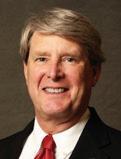
Dr. Counselman has been a member of the board of directors since July 2008, and was elected to the Executive Committee in 2011. Since 2003, he has served ABEM in a variety of capacities, including as examination editor, item writer, oral examiner, and member of the Relevance of Examination to Physician Practice (REPP) Task Force Advisory Panel. He currently serves as Chair of the Test Development Committee, is a member of the Academic Affairs, Executive, Finance, Research, and Test Administration Committees, and is an editor and chief examiner for the oral certification examination. Dr. Counselman has also represented ABEM on the EM Model Review Task Force, the Internal Medicine-CCM Task Force, Surgery-CCM Task Force, Anesthesia-CCM Task Force, and the Initial Certification Task Force. He has been active in a number of national organizations, including the Accreditation Council for Graduate Medical Education, American Board of Medical Specialties, American College of Emergency Physicians, Association of Academic Chairs of Emergency Medicine, Alpha Omega Alpha Honor Medical Society, Council of Emergency Medicine Residency Directors, and the Society for Academic Emergency Medicine.
Dr. Counselman received his medical degree from the Eastern Virginia Medical School in Norfolk, Virginia, where he also completed his residency training in emergency medicine. He is currently Distinguished Professor of Emergency Medicine and Chair of the Department of Emergency Medicine at Eastern Virginia Medical School, and member of the Emergency Physicians of Tidewater. His current areas of research interest are respiratory emergencies, marine envenomation, and graduate medical education.
At its July 2013 meeting, ABEM also elected the following directors to the 2014-15 Executive Committee: James H. Jones, MD, Immediate PastPresident; Barry N. Heller, MD, President-Elect; Michael L. Carius, MD, Secretary-Treasurer; Terry Kowalenko, MD Member-at-Large; and Robert W. Strauss, MD, Senior Member-at-Large.
Join a State Chapter
AAEM STATE CHAPTERS
Barry N. Heller, MD, Elected to the Office of President-Elect of ABEM
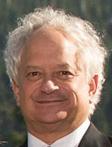
Dr. Heller has been a member of the board of directors since July 2008, and was elected to the Executive Committee in 2012. He has served ABEM in a variety of capacities, including as editor, examiner, and chief examiner for the oral certification examination, and member of the Case Development and Case Selection panels. He currently serves as the Chair of the Nominating Committee and Test Administration Committee, and is a member of the Executive, Finance, Research, and Test Development Committees.
Dr. Heller received his medical degree from Indiana University in Indianapolis, Indiana, and completed residency training in emergency medicine at Harbor-UCLA Medical Center in Torrance, California. He currently practices emergency medicine at St. Mary Medical Center in Long Beach, California, and Little Company of Mary San Pedro Hospital in San Pedro, California. Dr. Heller is an Assistant Clinical Professor of Medicine at UCLA School of Medicine. At St. Mary’s he has served as Chair of the Department of Emergency Medicine, Chief of Staff, and Vice President of Medical Affairs.
###
The American Board of Emergency Medicine (ABEM) certifies emergency physicians who meet its educational, professional standing, and examination standards. Its mission is to ensure the highest standards in the specialty of emergency medicine. There are currently over 31,000 ABEM-certified emergency physicians. ABEM is not a membership organization, but a non-profit, independent, physician evaluation organization. ABEM is one of 24 medical specialty certification boards recognized by the American Board of Medical Specialties. ■
AAEM members can make an impact on the local level by forming a state chapter of AAEM. Although emergency physicians are certainly encouraged to join both their state chapter and national AAEM, this is not a requirement. Those physicians who wish to belong solely to an AAEM state chapter are free to do so.
Please visit the state chapters page of our website at www.aaem.org/membership/state-chapters to find out more.
Available AAEM State Chapters
NOVEMBER/DECEMBER 2014 COMMONSENSE 31 AAEM NEWS
*Requires AAEM membership. • California • Delaware Valley • Florida • Great Lakes • Louisiana • Missouri* • New York • Texas • Uniformed Services • Tennessee • Virginia

AAEM Fellow Awarded AOA Professionalism Award
Lisa Moreno-Walton, MD FAAEM has been awarded the 2014 Edward D. Harris Professionalism Award. This award is given annually by Alpha Omega Alpha Honor Medical Society (AOA) and includes a $25,000 grant to initiate programs to teach professionalism to medical students. Dr. Moreno-Walton currently serves as Associate Residency Program Director and Assistant Professor of Emergency Medicine at LSU-New Orleans. She has been active in AAEM since 2001.
Dr. Moreno-Walton is particularly interested in the care of LGBT patients in emergency settings. Her prior research found that U.S. medical students receive less than 45 minutes of training on the care of these potentially vulnerable patients. She will use the AOA grant to develop a training program to familiarize students and residents with some of the unique medical and cultural needs of this patient population. The program will be made available to all who are interested.
This recipient of this award is not typically an emergency physician. The Academy is particularly proud that one of the few EPs to receive this award is a Fellow. Please join the Academy in congratulating Dr. MorenoWalton on this great accomplishment.
— The Assistant Editor
2014 Edward D. Harris Professionalism Award
The board of directors of Alpha Omega Alpha is pleased to announce the winner of the 2014 Edward D. Harris Professionalism Award. This award emphasizes AΩA’s commitment to its belief that professionalism is a crucial facet of being a physician, a quality that can be both taught and learned. Originally named the AΩA Professionalism Fellowship, the award was renamed in 2010 to honor the late Edward D. Harris, the
longtime executive director of the society. Applications were open to medical schools with active AΩA chapters or associations. Faculty who have demonstrated personal dedication to teaching and research in specific aspects of professionalism that could be transferred directly to medical students or resident physicians were encouraged to apply for these funds.
The Winner of the 2014 Edward D. Harris Professionalism Award is:
Lisa Moreno-Walton, MD MS FAAEM FACEP Professor of Clinical Emergency Medicine at Louisiana

State University Health Sciences Center, New Orleans
Professionalism in clinical medicine entails providing every patient with the best service, and this requires that physicians are culturally competent and sensitive to the needs of unique patient populations. A recent review of the literature and an unpublished study conducted by Moreno, et al, indicate that medical school and residency didactic curricula provide an average of 45 minutes a year of education regarding the unique health needs of the LGBT population. For this project, our team will create a video teaching tool designed to familiarize the learner with several health care situations unique to the LGBT population, will address several errors and misconceptions common in the treatment of this population, and will model culturally competent treatment interventions rendered with dignity and mutual respect. The video project will make the learning of material for which there are few content experts widely available to medical students and residents, schools and programs, both nationally and internationally. Reprinted with permission from Alpha Omega Honor Medical Society. ■
AAEM Exhibits at the American Hospital Association Leadership Summit
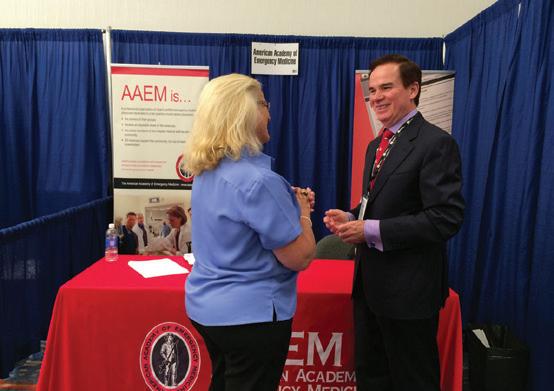 William Durkin, Jr., MD MBA CPE FAAEM
Immediate Past President
Leslie Zun, MD MBA FAAEM AAEM Board of Directors
William Durkin, Jr., MD MBA CPE FAAEM
Immediate Past President
Leslie Zun, MD MBA FAAEM AAEM Board of Directors
Once again, the Academy was represented at the Annual Leadership Summit of the American Hospital Association (AHA) held in July. This meeting is attended by thousands of hospital administrators and middle managers from all over the country.
Our exhibit, hosted by Drs. Durkin and Zun, showcased the advantages a dedicated, independent group offers a hospital. We also presented educational materials about the Academy and its mission, as well as our vision statement. The purpose was to demonstrate to hospital decisionmakers that there is a more attractive option than a contract management group (CMG) to staff their emergency departments.
Also present was the American College of Surgeons, as well as the Pathology organization. Both of these associations were publicizing new policies put out by their respective organizations. Of course, the two largest CMGs were also present in the exhibit hall. Having the Academy present allowed decision-makers to hear that the independent, democratic model is the best choice for a hospital, its community, or its patients. ■
NOVEMBER/DECEMBER 2014 COMMONSENSE 33 AAEM NEWS
AAEM immediate past president, William T. Durkin, Jr., MD MBA CPE FAAEM, speaks with an attendee visiting the AAEM exhibit at the AHA Leadership Summit.
Call for Quality Standards Committee Members
Leslie Zun, MD MBA FAAEM AAEM Board of Directors
The American Academy of Emergency Medicine has joined the National Quality Forum (NQF) as an organizational member, to provide input on quality measures that affect emergency medicine. The National Quality Forum is a not-for-profit, nonpartisan, membership-based organization that works on improvements in health care by convening working groups from the public and private sectors. Measures endorsed by NQF are considered the gold standard for health care measurement in the United States, and are submitted for adoption to the Centers for Medicare and Medicaid Services (CMS). Obviously, any quality measures or standards for the emergency department (ED) that are adopted by CMS have a major impact on emergency physicians. It is important that practicing
emergency physicians be deeply involved in the development of these. When non-emergency physicians decide how emergency medicine must be practiced, unintended consequences and collateral damage are the rule.
In response to membership in NQF, the AAEM board of directors has established the Quality Standards Committee to review NQF measures. Please consider joining this committee, and help review and improve NQF measures and make recommendations to AAEM's board. If you have any questions or comments about this committee, please contact Les Zun at zunl@sinai.org or (773) 257-6957. ■
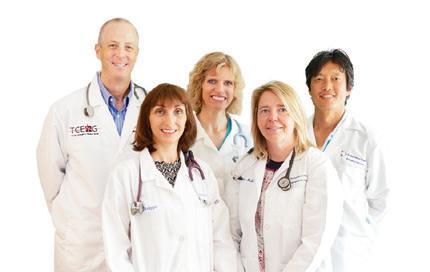
34 COMMONSENSE NOVEMBER/DECEMBER 2014 COMMITTEE REPORTS
Independent Emergency Physicians Consortium 696 San Ramon Valley Blvd., Ste. #144, Danville, CA 94526 925.855.8505 | www.iepc.org The Best of Both Worlds: Independent Emergency Group Large Group Business Independent Emergency Physicians Consortium • Collaboration • Benchmarking Data • Shared Innovations • Group Purchasing • Business Strength • Networking Visit our web site for employment opportunities at locations around the state. Join IEPC - Your ED Group will remain independent, but not be alone. Become Involved Join an AAEM Committee! Now Accepting Applications. Learn More. www.aaem.org/committees
Superb,
cu<ng
edge,
user-‐friendly
Emergency
Medicine
content

By subscribing, you allow free access for AAEM residents and students!
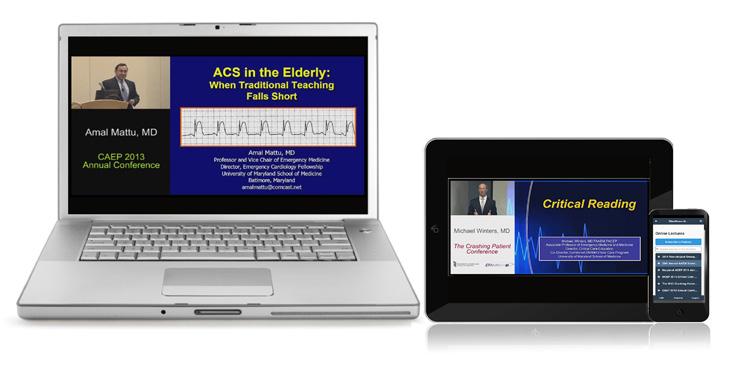
EMedHome
is
used
daily
by
thousands
of
your
colleagues
to Stay
Current,
Stay
Informed,
and
Stay
Ahead!


Don’t
miss
out
–
Log
In
Today!
Subscribe
NOW
at
a
discount:
Use
discount
code
AAEM14
to
subscribe
for
only
$84
–
includes
all
content
and
CME!
NOVEMBER/DECEMBER 2014 COMMONSENSE 35 EMedHome.com EMedHome.com:
Since
2000,
the
homepage
of
Emergency
Medicine
follow us on twitter
Save Any Lives Recently? A New Grad’s Reflection on the Words of the Wisest
Kristin E. Fontes, MD
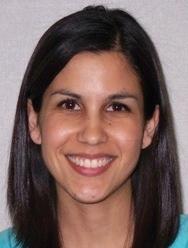
This is it! You’ve made it to attendinghood. You climbed out of that consciously incompetent cognitive hole we all fall into near the end of residency, and now you’ve regained your confidence and are ready to work.
And then you work your first few shifts. You find yourself sweating more than you used to during resuscitations. You second-guess yourself on that patient you sent home. Your priorities are a little different now. Have you asked yourself: How many Level 5 charts have I billed? Am I efficiently managing the department? Am I a good role model and teacher for my residents and students? Am I ordering too many d-dimers? Have I missed something?
What about: How many patients have I truly helped? Although I tried to ask myself this on occasion during residency, it recently drifted down that list of questions and, for a time, failed to make it onto the highway of thoughts that occupied many of my traffic-ridden commutes home after work. When I sat down to write this article, I remembered a learning exercise I used to participate in, and only now am I realizing that it taught me the most important lesson of my career.
Are You Ready?
CV and Cover Letter Review Service: Enhance your credentials. Increase your job opportunities.

YPS Members
The Young Physicians Section (YPS) offers FREE curriculum vitae review for YPS members as part of your membership! YPS — Invested in your future.
Graduating Residents
For $25, have your CV & cover letter reviewed by an experienced member of the YPS board! The service fee will be applied to your dues if you join AAEM as an Associate for Full Voting member. This offer is only valid for the year following your residency graduation — so be sure to take advantage of it today!
www.ypsaaem.org/cv-review info@ypsaaem.org
During residency, I worked a good number of shifts with Dr. K. He’s one of the program’s most seasoned faculty and a favorite among the residents. His trim, graying beard, sage eyes, and ability to teach through stories from his experience subtly depict his mastery of our specialty. At the start of his shifts he strolls casually into the ED, and after he’s seated at his computer and has finished singing his tune, he’ll turn to the resident and ask in his raspy yet soft voice, “Save any lives recently?” The first several times I heard this question, I grumbled to myself, “Nope. Haven’t tubed anyone in weeks. Didn’t get ROSC on that last code. Haven’t even done a cric yet.” Then I went back to furiously typing. If I didn’t have a case to tell him about, he usually pulled one from his volumes of patient encounters. After several of these stories, I started to realize that saving a patient’s life didn’t necessarily mean sticking a piece of plastic in them or bringing them back from the dead. It could mean asking the right questions or listening to your “spidey sense” in a challenging case and taking a child out of an abusive home, helping an elderly person get a little extra help to meet their basic needs, or helping a consultant understand your concern about a patient they wanted to discharge. You may never get kudos or a word of thanks about those cases, but you'll fall asleep more easily because of them.
If you work in a teaching hospital, think about your residents and students. They’re undoubtedly involved in a rigorous curriculum on top of their hospital duties. They put in countless hours in the effort to translate textbook facts and clinical exposure into a solid practice. Believe it or not, they also want to do a good job for you. As a resident, I always found that I had the most fulfilling experience with the attendings that set clear expectations for me on shift. As part of my own practice now, I make an effort to tell my residents and students to always do what's best for the patient; and I tell myself the same. You may not end up with a wild story to tell your friends at cocktail parties, but you will save lives.
You may have set some goals for your first year out in the “real world,” be it a broken record in your head repeating “just don’t kill anyone” or an organized list stored in your peripheral brain. I recommend you add one thing to that list. Before you walk into work each day, channel Dr. K. and ask yourself: save any lives recently? You might be surprised at the answer. ■
36 COMMONSENSE NOVEMBER/DECEMBER 2014 YOUNG PHYSICIANS SECTION NEWS





NOVEMBER/DECEMBER 2014 COMMONSENSE 37 YOUNG PHYSICIANS SECTION NEWS presented by the AAEM Young Physicians Section (YPS) and Academic Life in Emergency Medicine (ALiEM) for Young Faculty Social Media and Digital Scholarship Fellowship ALiEM-AAEM Applications due January 2, 2015 Available to all AAEM YPS members Apply at www.ypsaaem.org/fellowship.org or contact info@ypsaaem.org. New Voices in EM, Sign Up for an Open Mic Session! Speak at the 21st Annual Scientific Assembly, on Monday, March 2 from 8am-6pm ww.aaem.org/AAEM15/open-mic The floor is yours — the Open Mic Session is your unique chance to speak at a national meeting on the topic of your choice. Ten of the slots will be filled in advance — six will be filled onsite, on a “first-come, first-served” basis. The top two speakers will be invited to give a formal presentation at the 2016 Annual Scientific Assembly in Las Vegas, NV. To sign up, contact Kathy Uy at kuy@aaem.org or call 800-884-2236 Sponsored by the Young Physicians Section
AAEM/RSA President’s Message

The Sugar Cookie
Meaghan Mercer, DO AAEM/RSA President
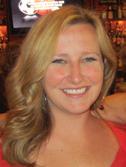
As the winter is upon us, I want to wish everyone a wonderful holiday season and a Happy New Year. And with 2014 coming to a close, I also want to thank all the student and resident members for their endless support. AAEM/RSA is with you all the way! I also want to remind everyone that AAEM’s Scientific Assembly is just around the corner, and we hope to see you in Austin from February 28 through March 4, 2015.
While researching Texas, I came across a University of Texas commencement speech delivered by Admiral William H. McRaven, and it stuck a cord and reminded me of life in medical training. He left his audience with ten ways to make the world a better place, which I think are applicable to everyone. One of my favorite stories he shared was about becoming a sugar cookie.




Several times a week, the instructors would line up the class and do a uniform inspection. But it seemed that no matter how much effort you put into starching your hat … the instructors would find “something” wrong. For failing the uniform inspection, the student had to run, fully clothed into the surfzone and then, wet from head to toe, roll around on the beach until every part of your body was covered with sand. The effect was known as a “sugar cookie.” You stayed in that uniform the rest of the day — cold, wet, and sandy. There were many a student who just couldn’t accept the fact that all their effort was in vain. That no matter how hard
they tried to get the uniform right — it was unappreciated. Those students didn’t understand the purpose of the drill. You were never going to succeed. You were never going to have a perfect uniform. You will fail. You will likely fail often. It will be painful. It will be discouraging. At times it will test you to your very core. If you want to change the world get over being a sugar cookie and keep moving forward.
Residency is like childhood: you enter in rapt awe of the world around you, seeking the basic needs of shelter, protection, guidance, and sustenance. As the end of residency draws near, you grow up and begin to appreciate the life lessons you have been given — even if they came from tough love. The attending you thought didn’t like you, who gave you tough but truthful and detailed reviews, made you push yourself to be better. The attending who taught you efficiency — as you pushed to the breaking point — made you realize you have learned to navigate the ED.
As I near the end of my training, I realize that each teacher along my path had a profound effect on my education, and many of those who went above and beyond simple duty were the ones who made me be a sugar cookie. They took the time to identify my weaknesses and pushed me to overcome them. I want to thank everyone out there who has taken endless hours to teach me a profession of life-long learning. My gratitude goes beyond words.
Happy Holidays once again, and I look forward to seeing you in Austin. ■



38 COMMONSENSE NOVEMBER/DECEMBER 2014 AAEM/RSA NEWS
AAEM 21st Annual Scientific Assembly Monday, March 2, 2015 6:00pm-8:00pm Liberty Tavern inside the Hilton Austin LIGHT REFRESHMENTS WILL BE SERVED. Register at www.aaem.org/AAEM15/career-fair AAEM/RSA Career Connections FAIR! Please join us for the AUSTIN TEXAS
The Sculptor’s Compass — A Diagnostic Paradigm
Darshan Thota, MD FAWM Naval Medical Center San Diego
As a new resident in the emergency department, I am starting to learn that serious and life-threatening conditions require rapid identification and intervention. Response time is often lengthened due to ancillary services, existing policies, overcrowding and cost of care. The most efficient emergency medicine (EM) physicians have a mental model or road map to guide them through the uncertainty of pathology. I call my EM diagnostic paradigm the Sculptor’s Compass.
My mental model frames medicine as a sea of uncertainty where physicians are captains sailing through stormy conditions of disease and pain trying to avoid hitting the icebergs of death and suffering. In sailing, we reach for a compass to help aid in navigation. In this model, my schema for how to approach the undifferentiated patient is my compass.
In my short time within this fast paced, quick thinking and amazingly fun field, I noticed that our paradigm in the ED is completely different than the rest of the hospital. For example, a friend who is a urology resident asked me to explain how ED personnel approach patient care. This resident couldn’t follow the thought process of consultations from the ED. I initially tried to use a metaphor of playing with a box of Legos. I said that the diagnostic process in the emergency department is a lot like assembling a structure using Lego pieces. You take data points and put them together to see which pieces fit correctly in order to build a stable structure. That logical structure will hopefully form some foundation for a reasonable diagnosis.
While explaining the Lego metaphor, it occurred to me that our specialty views patients and disease radically different from the rest of medical staff in the hospital. Other fields in the hospital want to know what comprises a disease or injury. In medical school we're taught how to use signs, symptoms, clinical gestalt and test results to come up with a differential and ultimately determine the diagnosis. What is the diagnosis? What is the treatment? This process produces a very straightforward and provides a logical approach to sailing the seas of medical uncertainty.
In contrast, our specialty must often focus on what is NOT present. For example, if someone has severe chest pain and we can't definitively rule out acute MI, pulmonary embolism, pneumothorax, dissection or Boerhaave's, then we need to think hard about admission for further observation. This process is less like adding blocks to come to a pyramid of diagnosis and more like sculpting. It's the idea of negative space: taking a block of marble and cutting away everything that something is not, until you are left with something that is. You care what something is not, start cutting away and see the sculpture emerge trying to ensure no serious or life threatening event occurs.
Cutting away at the unknown to gain a diagnosis by ruling out possibilities is the daily work of an emergency physician. A staff member told me
that a good trick to help patients feel less overwhelmed when a diagnosis takes a long time is to smile at the patient and say "You know, often times in the ED, we're better at telling you what you don't have, rather than what you do have." This schema for approaching the undifferentiated patient is condensed into the metaphor of a Sculptor’s Compass
When I explained this Sculptor’s Compass approach to EM, my friend the urology resident said “That makes so much sense now, you guys aren't total morons, it's how you think about things!" Mission accomplished! It was my first successful communication with a colleague from another specialty about the EM approach to medicine.
I believe that not only understanding EM, but explaining our mindset to some of our colleges using the Sculptor’s Compass paradigm will facilitate cross disciplinary understanding and lead to better patient outcomes. Personally, the compass paradigm is one the most useful mental tools I have at my disposal. It provides a framework to approach EM and helps to navigate the seas of medical uncertainty.
The views expressed in this article are those of the authors and do not represent the official position of the U.S. Navy, Department of Defense, or U.S. Government. ■
New Patient Discharge Resources!
AAEM/RSA developed free resources to help you help your patients. Visit the AAEM/RSA or AAEM website for free downloads of patient discharge brochures, including:
• Resources for Antibiotic Use

• Why Don’t I Have a Clear Diagnosis?
• Medication Safety: Tips for Parents & Seniors
• Resources for Mental Health: How to Find the Help You Need
• Guide to Pain Medication: What You Need to Know
• Resources for Alcohol Abuse and Alcoholism

• Being Safe at Home – Domestic Violence

www.aaemrsa.org/resources/patient-and-discharge-resources
www.aaem.org/em-resources/patient-and-discharge-resources
NOVEMBER/DECEMBER 2014 COMMONSENSE 39 AAEM/RSA NEWS
Updates in Prehospital Emergency Medical Service Care
Authors: Phillip Magidson, MD MPH; David Bostick, MD MPH; Kami Hu, MD; Carina Sorenson, MD; David Wacker, MD PhD
Editors: Michael C. Bond, MD FAAEM; Jay Khadpe, MD FAAEM
Correction: Daniel Boutsikaris, MD, was an author of the July/August Resident Journal Review: “What is the Evidence for Therapeutic Hypothermia?”
Approximately 15% of all patients seen in the emergency department (ED) arrive via emergency medical services (EMS) which represents over 20 million annual visits.1 For this reason, improvement and expansion of evidence based interventions within the prehospital setting should continue to be explored. In this month’s “Resident Journal Review,” we focus on diagnostic, therapeutic, and logistical updates in prehospital care.
Pain Management
Management of pain after injury in the prehospital setting is important for patient comfort and outcome. The usefulness of opioid analgesia; however, may be limited due to side effects including nausea and respiratory depression.
Ducassé JL, Siksik G, Durand-Béchu M, et al. Nitrous oxide for early analgesia in the emergency setting: A randomized, double-blind multicenter prehospital trial. Acad Emerg Med. 2013;20:178-84.
This prospective, randomized, multicenter, double-blind trial sought to demonstrate the efficacy of using 50% nitrous oxide (N2O) to treat moderate acute traumatic pain.
Patients with contraindications to N2O, previous use of analgesic medication, or pregnancy were excluded. Adult patients with moderate traumatic acute pain who met the required inclusion criteria were enrolled over a one-year period. Patients were randomly assigned to receive either premixed 50% N2O (N2O group) or medical air (MA group). Fifteen minutes after the beginning of inhalation all patients received 50% N2O until ED arrival. The primary endpoint was percentage of patients with pain relief (pain score <3) 15 minutes (T15) after initiation of inhalation.
Fifteen minutes after the inhalation, 67% of the patients in the N2O group had a pain score of 3 or lower versus 27% of those in the MA group (95% CI 17% to 63%, p<0.0001). The median pain scores were significantly lower in the N2O group at T15 (2 vs 5; p<0.0001). All adverse events were reversible with no other complications five minutes after the end of inhalation.
This study has several limitations but is interesting in that it suggests N2O may be a possible alternative to opioids in prehospital in patients with traumatic pain.
Jennings PA, Cameron P, Bernard S, et al. Morphine and ketamine is superior to morphine alone for out-of-hospital trauma analgesia: A randomized controlled trial. Ann Emerg Med. 2012;59:497-503.
This prospective, randomized, controlled, open-label study compared IV ketamine with IV morphine in reducing prehospital traumatic pain.
After initial pain control with one dose of morphine, eligible patients were then randomized to receive either additional morphine every five minutes or ketamine every three minutes. Paramedics used clinical judgment to determine dosing on a per patient basis. Patients continued to receive morphine or ketamine according to schedule until they became pain free, arrived at the ED, or experienced a serious adverse event. The primary outcome was change in pain score upon arrival to the ED.
Over three years, 135 patients were enrolled. There were no significant baseline differences between groups. Mean pain score change was -5.6 (95% CI -6.2 to -5.0) in the ketamine group compared with -3.2 (95% CI -3.2 to -1.6) in the morphine group. The ketamine group did experience more adverse effects (39%) than the morphine group (14%).
A major limitation of this study is that only the patients, not the clinicians, were blinded. Additionally, the study did not explain the choice of dosing intervals or ranges for the drugs. The more frequent dosing of ketamine may have biased patients to believe their pain was being more aggressively managed.
This study suggests that ketamine may be superior to morphine for prehospital analgesia though this may be limited by an increase in adverse events effects.
Noninvasive Positive Pressure Ventilation (NPPV)
While the use of NPPV in all causes of acute respiratory failure (ARF) is still controversial, its use in acute cardiogenic pulmonary edema (ACPE) and COPD is well-supported, with NPPV decreasing both intubation and mortality.2-5 While it seems intuitive that earlier respiratory support, such as in the prehospital setting, would further improve outcomes, existing studies are too small to confirm this theory.
Williams TA, Finn J, Perkins GD, et al. Prehospital continuous positive airway pressure for acute respiratory failure: A systematic review and meta-analysis. Prehosp Emerg Care. 2013;17:261-73.
This systematic review and meta-analysis examined the treatment of ambulance-transported patients with ARF, including only studies that compared standard prehospital care to standard care plus the initiation of continuous positive airway pressure (CPAP).
The final study analysis included five studies with a total of 1,002 patients, 471 in the CPAP group and 531 in the standard care group. There was no difference between groups in terms of age or gender. Pooled analysis demonstrated a 69% overall reduction in rate of intubation (OR 0.31, 95% CI 0.19-0.51) and a 59% decrease in overall mortality (OR 0.41, 95% CI 0.19-0.87) in the CPAP group. There was no difference in hospital or ICU length of stay (LOS) between groups. An improvement in respiratory rate was documented in the CPAP arm in most studies. There was no difference between groups for reported adverse outcomes.
40 COMMONSENSE NOVEMBER/DECEMBER 2014 AAEM/RSA NEWS
Continued on next page
Though there are several limitations of this meta-analysis, the results show prehospital CPAP did reduce the overall rate of intubation and decrease mortality.
Mal S, McLeod S, Iansavichene A, et al. Effect of out-ofhospital noninvasive positive-pressure support ventilation in adult patients with severe respiratory distress: A systematic review and meta-analysis. Ann Emerg Med. 2014;63:600-607. Rather than focusing only on CPAP, Mal, et al., performed a similar metaanalysis that included all types of NPPV, including bilevel positive airway pressure (BIPAP) and pressure-support ventilation (PSV). The primary outcome of interest was the rate of in-hospital mortality, with secondary outcomes of hospital and ICU LOS, rate of subsequent intubations, and rate of complications secondary to NPPV.
The authors reviewed seven studies that included a total of 632 patients, 313 randomized to standard treatment, and 319 receiving NPPV in addition to standard therapy. The breakdown of etiologies included 522 patients with ACPE, 81 with COPD, 19 with pneumonia, and 10 with asthma. The final analysis demonstrated a benefit of NPPV with a relative risk of 0.58 for in-hospital mortality (95% CI 0.35-0.95) and number needed to treat (NNT) of 18. Six studies reported on rates of invasive ventilation after NPPV, and again there was a demonstrated benefit in the NPPV group, with a relative risk of 0.37 (95% CI 0.24-0.58) and a NNT of 8. Three studies reported hospital LOS, but only one demonstrated a statistically significant benefit to NPPV, and only one of four studies reported a significant improvement in ICU LOS.
The prehospital use of NPPV appears to provide benefits to both morbidity and mortality in ACPE and has been demonstrated to be feasible in a variety of EMS systems. While we still cannot comment on the benefit of prehospital NPPV in asthma and other less-studied conditions, the low rate of adverse events indicates NPPV may be able to be initiated safely in the prehospital setting, irrespective of underlying etiology.
Acute Coronary Syndrome Care
Easy to use prediction tools can aid rapid triage of patients in the ED as well as guide initial workup and therapeutic interventions. One area where these early indicators of serious disease may be beneficial is in the care of patients with suspected acute coronary syndrome (ACS).
Stengaard C, Sørenson JT, Ladefoged SA, et al. Quantitative point-of-care troponin t measurement for diagnosis and prognosis in patients with a suspected acute myocardial infarction. Am J Cardiol 2013;112,1361-66.
This prospective observational study examined whether measurement of serum troponin level (POCt) by EMS providers in the prehospital setting could be used as a predictor of diagnosis and prognosis in patients with suspected ACS.
Of 1,099 patients who had an EKG by EMS, 985 were included in the study. The only exclusion criterion was inability to draw blood on scene. Of these, 192 were diagnosed with an acute myocardial infarct (AMI), but only 73 (39%) of these patients had a positive POCt measurement in the field. Conversely, of the 785 patients not ultimately diagnosed with AMI 34 (5%) had a positive POCt. The highest annual mortality was
0.38 (0.23-0.65 for 95% CI) for those with positive POCt but without AMI. Patients with positive POCt and diagnosis of AMI had an annual mortality rate of 0.17 (0.10-0.27 for 95% CI)r, and patients with negative POCt had annual mortality rates of 0.06 or less regardless of AMI diagnosis.
This study successfully demonstrates the feasibility of testing POCt levels in the prehospital setting; however the sensitivity for detecting AMI is poor as nearly 2/3 of those having AMI had negative prehospital POCt. A positive POCt was associated with an increased risk of mortality per year suggesting a positive value may have a role as a prognostic factor. More work is required to determine if this early testing may impact patient morbidity or mortality.
Ambulance Diversions
According to the American Hospital Association, 38% of all EDs in the U.S. reported capacity issues, either operating “at capacity” or “over capacity” in 2010. This has led many hospitals to use ambulance diversion as a technique to reduce crowding. In this same year, 50% of all urban hospitals spent some time on diversion. Because of this, many jurisdictions have moved to ban diversions.
O’Keefe SD, Bibi S, Rubin-Smith JE, et al. “No Diversion”: A qualitative study of emergency medicine leaders in Boston, MA, and the effects of a statewide diversion ban policy. Ann Emerg Med. 2014;63:589-597.e7.
This article examined the attitudes of ED staff about the perceived effects of a ban on ambulance diversion on patients, providers, and working relationships in a large urban EMS system. The qualitative study conducted semi-structures interviews of key individuals within ED leadership both before and after the diversion ban. Eighteen total interviews were conducted involving seven physician ED directors, two physician designees, and nine registered nurse leaders. All participants were from one of nine ambulance-receiving hospitals within the city of Boston.
Effects on patients during diversion were noted by most of those interviewed. During times of diversion, many patients were diverted away from the hospital with which they were most familiar. This was viewed as negatively impacting quality of care and patient satisfaction.
Most interviewees stated that providers disliked diversion as refusing patients is fundamentally opposed to the principles of emergency care. This led to feelings of job dissatisfaction, low morale, and high staff turnover, most notably among nurses. However, during times of crowding, some members of the staff request to go on diversion as a way to regroup. This would place colleagues at odds about whether or not diversion was appropriate, with some viewing diversion as a sign of weakness while others viewed it as a necessity. After the ban, these conflicts were eliminated, as diversion was simply not an option.
The diversion ban also improved prehospital and ED provider relationships. Prior to the ban, prehospital providers received negative feedback (both verbal and nonverbal) from various ED staff members if a patient was brought in during a period of diversion. These negative interactions had been nearly eliminated during the ban. Relationships between hospital administration and ED leadership also benefited as the ban prompted
NOVEMBER/DECEMBER 2014 COMMONSENSE 41 AAEM/RSA NEWS Continued on next page
the administration to consider other solutions to capacity problems as diversion was no longer an option.
Although this small qualitative study did not look at patient outcomes its results suggest that a ban on ambulance diversion may have favorable effects.
Resources
1. CDC. National hospital ambulatory medical care survey: 2010 emergency department summary tables. http://wwwcdcgov/nchs/achd/web_ tableshtm#namcs. 2010.
2. Lim WJ, Mohammed Akram R, Carson KV, et al. Non-invasive positive pressure ventilation for treatment of respiratory failure due to severe acute exacerbations of asthma. Cochrane Database Syst Rev. 2012 Dec;12:CD004360.
3. Carrillo A, Gonzalez-Diaz G, Ferrer M, et al. Non-invasive ventilation in community-acquired pneumonia and severe acute respiratory failure. Intensive Care Med. 2012 Mar;38(3):458-66.
4. Vital FM, Saconato H, Ladeira MT, et al. Non-invasive positive pressure ventilation (CPAP or bilevel NPPV) for cardiogenic pulmonary edema. Cochrane Database Syst Rev. 2008 Jul 16;(3):CD005351.
5. Ram FS, Lightowler JV, Wedzicha JA. Non-invasive positive pressure ventilation for treatment of respiratory failure due to exacerbations of chronic obstructive pulmonary disease. Cochrane Database Syst Rev. 2003;(1):CD004104. Update in: Cochrane Database Syst Rev. 2004;(1):CD004104. ■
It’s a Privilege, Not a Burden
Jacob Stelter, MS4 Loyola University Chicago Stritch School of Medicine
After years of battling things like prematurely adopted EMRs, government bureaucrats, clueless hospital administrators, greedy insurance companies, malignant tort lawyers, CMG profiteers, and "emergency" patients who don't need to see any doctor at all — much less an emergency physician — it is easy to become jaded and lose sight of our real value. That's why I chose to publish this editorial from a medical student. I hope it reminds you of the true worth of what you do, and how important you are. Stay strong!
— The Editor

I recently read an article in the Chicago Tribune entitled, “Expert’s New Career Prescription: Forget About Becoming a Doctor.”1 In it author Dawn Turner Trice interviews the executive director of the Chicago Area Health and Medical Careers Program, Regnal Jones, who advises students not to pursue a career as a physician. He cites the cost of tuition, the many years of training, the long hours, and more medical graduates than residency spots — among other things — as reasons not to become a physician. I respect his opinion and have no doubt that some of his points are legitimate, especially regarding the cost of tuition and the fact that there are insufficient residency spots for graduating medical students. However, I respectfully disagree with much of what he says. At the end of her article Trice says, “You've heard Jones' position. Now tell me what you think.” Well, I did just that — sending her an email rebutting most of Jones' arguments. Now I want to explain to you why Jones is largely wrong, and present some of the positive aspects of being a physician.
Membership has it’s Perks – Listen to EM:RAP Today!
Paid AAEM/RSA members receive access to Emergency Medicine: Reviews and Perspectives (EM:RAP) at no additional cost. This outstanding monthly entertaining, and educational podcast, ordinarily $55/year is included in the cost of your membership to AAEM/RSA.

Access Your Member Benefit:
1. Log in to your AAEM/RSA member’s only account at www. aaemrsa.org/myrsa
2. Once logged on – click on “Access EM:RAP”
3. If you already have an EM:RAP account, you may log in with that username and password. If not, you will need to create an account.
4. Contact info@aaemrsa.org with any questions.
Before I entered medical school, I understood the path to becoming a physician and what the difficulties would be. I knew about the long hours, time away from family, and a seven-year-minimum investment from the start of medical school until the end of residency. I realized that when “MD” was placed after my name I would carry a debt of over $200,000 — with interest that would accumulate while I was making $50,000 a year as a resident. I knew that as the American population ages, doctors will be in higher demand but will be faced with many uncertainties as the Affordable Care Act becomes more established. I knew that it was becoming increasingly difficult for physicians to maintain their independent practices without relinquishing control and autonomy to hospital systems or other corporations. These are all points Jones makes, and I do not deny that each is a challenge. However, he fails to mention any of the rewards of medicine.
Let's start with finances, a minor but still relevant reward for practicing medicine. Though physician salaries remain uncertain, especially in light of health care overhaul, I don't know a single attending physician who makes so little money he is unable to own a home and a car, support a family, and pay back educational loans — simultaneously. While medicine may not be as lucrative as it once was, most physicians are able to live quite comfortably.
42 COMMONSENSE NOVEMBER/DECEMBER 2014 AAEM/RSA NEWS
Continued on next page
Second, physicians have a unique role in our society. As a student interested in emergency medicine, I have spent a lot of time in emergency departments. I am amazed at how trusting people are of physicians they have known only for moments. I have had many encounters with patients in which they revealed their entire history of drug use, smoking and drinking habits, sexual practices, and family medical history — despite the fact that we met just minutes before. People trust doctors, and that is something I and my colleagues take very seriously and find immensely gratifying.
Third, being able to intervene constructively in the lives of patients is priceless. A patient with congestive heart failure, who comes in barely able to breathe or walk, is indescribably grateful to his physician when he is able to walk out of the hospital breathing normally. A patient with a ruptured aortic aneurysm dies unless a physician immediately intervenes, often allowing that patient to leave the hospital a few days later with another chance to hug loved ones and enjoy life. It is these moments that make being a physician absolutely priceless. Moments like these send chills down my spine, as I see how physicians extend and improve the lives of so many people and earn for themselves a sense of satisfaction that no amount of money can buy.
Finally, physicians also have the opportunity to celebrate with families as we help bring new life into the world, and console families while we make patients comfortable as they exit this world. I would never trade such experiences, and they set our profession apart from all others.
Regnar Jones recommends becoming a physician assistant instead of a physician, saying, “Over the last decade, the number of physician assistants has more than doubled to about 93,000 today, according to the American Academy of Physician Assistants, which expects the number to continue to rise dramatically ... Many physician assistants already

do what physicians do and, in some cases, do it better. Their patient outcomes can be better and they go to school for fewer years and don't do residencies or have the same debt. A lot of them don't even need to consult with anyone to manage care."
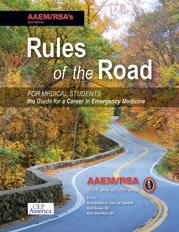

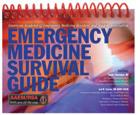


While PAs have definitely found their niche in the health care world, they neither are nor claim to be substitutes for physicians. Physician assistants increase access to primary care and basic urgent care for many people. However, the reason medical school and residency are so long is that it takes that long to master a medical specialty. I respect PAs and have worked with quite a few. I appreciate their role in the care of our ever-increasing number of patients, but they are not replacements for physicians. They do not “do what physicians do” — much less “do it better.” The same is true of nurse practitioners, even though — unlike PAs — some of them do claim to be substitutes for physicians.
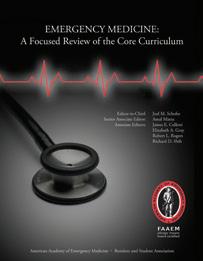
In closing, at the end of my career I may not have a Maserati or Lamborghini in my garage. I may not own a seven-bedroom estate in a gated community or a massive condo on the Gold Coast in Chicago. However, I hope and believe that I will look back on my career with immense satisfaction and joy, knowing that through both amazing times and difficult times I was able to make a positive, sometimes life-saving impact on thousands of people. That assures me I have chosen the right career path, and I firmly believe that if you ask me thirty years from now, I will tell you that I would choose the same path again.
References
Trice DT. Expert's new career prescription: Forget about becoming a doctor. The Chicago Tribune September 25, 2013. http://articles.chicagotribune.com/2013-09-25/ news/ct-x-0925-trice-column-20130925_1_medical-school-residency-health-careprofessions. ■

NOVEMBER/DECEMBER 2014 COMMONSENSE 43 AAEM/RSA NEWS
AAEM BOOKSTORE Great deals always available at aaem.org/bookstore. Select titles now available in eBook format! Visit the bookstore website for more information.
Medical Student Council President’s Message Get Involved and Attend an Upcoming AAEM/RSA Event Near You!

 Mike Wilk, MS3 Medical Student Council President
Mike Wilk, MS3 Medical Student Council President
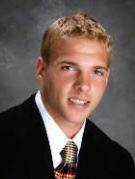
“I have nothing else to show my interest in [insert specialty of interest] on my resume besides well … just being in medical school,” remains a comment I often hear from fellow medical students, especially those still struggling to choose a specialty going into their fourth year. With the number of students pursuing EM growing each year, the pressure to excel during medical school seems higher than ever. AAEM/RSA continues to offer a number of great opportunities for you to grow and develop as a medical student. Besides getting involved in EM research or participating in your school’s EMIG or the various EM organizations, conferences are a great way to learn more about emergency medicine.
While there are various EM conferences around the country each year, AAEM/RSA sponsors two regional symposia in addition to its involvement in the AAEM Scientific Assembly. The 2014 Midwest Medical Student Symposium, at Loyola University in August, was our largest regional symposium to date with over 150 students in attendance and nearly 20 residency programs represented. Students had the opportunity to hear and speak with program directors from around the Midwest and AAEM's president, Dr. Mark Reiter. Topics covered everything from EM residency competitiveness to international EM to toxicology to advice on how to
perform well on your clerkships and interviews. Students were able to speak with many program directors and current EM residents during the mentor-student lunch and residency fair. Hands-on sessions included intubation, ultrasound, and clinical simulations.
Opportunities remain this year for students to meet, network, and learn from some of the most prominent leaders in emergency medical education. Consider attending the Mid-Atlantic Medical Student Symposium on November 8, 2014, at the Georgetown School of Medicine in Washington, D.C. As a paid AAEM/RSA member, you also get free registration to the 2015 Scientific Assembly in Austin, Texas from February 28 through March 4, which will feature a track specifically for medical students. We are currently recruiting medical students to serve as ambassadors to assist with the Scientific Assembly (applications are available on our website). Keep in mind that just attending one of these events is an easy and fun way to demonstrate your interest and commitment to the specialty. More information about all upcoming events can be found on our website.
As always, feel free to contact us (info@aaemrsa.org) with any questions or new ideas on how the medical student council may assist you, as you pursue Match Day and beyond! ■
44 COMMONSENSE NOVEMBER/DECEMBER 2014 AAEM/RSA NEWS
Introducing the AAEM/RSA Blog! AAEM/RSA is excited to announce the launch of our blog! The blog is a great resource for both residents and students, featuring: • Clinical Pearls • Searchable archives of valuable content • The latest RSA articles from Common Sense & Modern Resident • New! Weekly Peer-Reviewed Posts — every Sunday at 3pm ET Call for Articles! Do you have educational content to contribute? Email submissions to info@aaemrsa.org www.aaemrsa.blogspot.com
With AAEM You Have:

Benefits at Your Fingertips

AAEM members receive discounted access to:
• EMedHome
• Peer Charts
• PEPID
• EMresource.org *
• Canopy Medical Translator App * — FREE
• ShiftGen *
• Journal of Emergency Medicine — FREE Online/Paper Subscription
A Steadfast Advocate
We advocate for you, the individual emergency physician. Your professional and personal welfare are our primary concern.
• Advocacy through professional Washington lobbyists



• The AAEM PAC — dedicated to protecting the future of EM
• Support & legal assistance provided to members whose rights are threatened

• Joint Ventures — Several large hospital networks and CMGs have recently formed joint ventures whereby the two entities control the physicians’ practice and split profits from the physicians’ professional fees. AAEM is actively opposing these arrangements through a variety of regulatory and legal avenues.
• Tenet Health — Tenet has proposed to terminate the emergency medicine contracts at 11 of its California EDs so it can offer these profits to a large CMG in return for taking over all of its money-losing hospitalist and anesthesiology contracts. AAEM and CAL/AAEM have been aggressively advocating for the affected physicians and have been educating Tenet and the public on how this plan may negatively affect quality of care.
• Due Process — AAEM has been meeting with CMS and members of Congress regarding expanding due process protections for emergency physicians.
The AAEM Network
The Academy is over 8,000 strong and growing. We offer multiple ways for you to plug into the organization and interact with your fellow members.
• Listen in to our podcasts — over 10,000 downloads *
• Read up on insights & opinions in Common Sense, our member magazine — inspire discussions with your colleagues, write us a Letter to the Editor
• Engage on what’s important to you via AAEM Connect, a centralized dashboard of social media & interactive elements www. aaem.org/connect
Professional Toolkit
Benefits and support provided for managing or starting democratic groups.
• Leadership training resources from the American Association for Physician Leadership
• The exclusive AAEM Job Bank — browse open positions that are consistent with the mission and values of AAEM
• Comprehensive insurance program from Hays Affinity including: malpractice, health, disability, life, umbrella, auto/ home, dental & vision, and long-term care *
Premier Educational Opportunities
Registration Now Open! www.aaem.org/AAEM15

• Highly recommended Oral Board and Written Board Review Courses

NOVEMBER/DECEMBER 2014 COMMONSENSE 51 FROM THE EDITOR’S DESK
Renew Today for 2015! Lowest annual dues of all emergency medicine organizations. Dedicated Support. Unparalleled Value. www.aaem.org/renew We provide affordable, high-quality continuing medical education in emergency medicine in person and online.
AUSTIN TEXAS • Foremost clinical conference in EM: the AAEM Annual Scientific Assembly. Registration is FREE for members with a refundable deposit. HILTON AUSTINAUSTIN, TX FEBRUARY 28 – MARCH 4, 2015 • VIIIth Mediterranean Emergency Medicine Congress September 2015 ROME, ITALY MEDITERRANEAN EMERGENCY MEDICINE CONGRESS www.aaem.org/education/memc • NEW: Online Learning Library – AAEM’s exceptional educational content is now available online with CME options. www.aaem.org/education/online-learning-library NEW! Receive CME credit anywhere, anytime. Start today! AAEM Online Learning
Benefits! *New Benefits!
*New
NEW!
AAEM Written Board Review Course
Unmatched Preparation for the Qualifying Exam and ConCert Exam

• Exclusive rates for AAEM Members and more content on the way! • Superb, AAEM-quality educational content with AMA PRA Category 1 CreditsTM available. • The 2014 AAEM Scientific Assembly is currently available, FREE access to AAEM members! Log In Today! Premier educational content from AAEM, now available online! American Academy of Emergency Medicine AAEM Online Learning Library NEW! www.aaem.org/education/online-learning-library






































































 Andy Walker, MD FAAEM Editor, Common Sense AAEM Board of Directors
Andy Walker, MD FAAEM Editor, Common Sense AAEM Board of Directors















































































































 Joseph Lex, Jr., MD MAAEM FAAEM AAEM Education Committee
Joseph Lex, Jr., MD MAAEM FAAEM AAEM Education Committee











 AAEM Secretary-Treasurer Commander, U.S. Navy Medical Corps
AAEM Secretary-Treasurer Commander, U.S. Navy Medical Corps

















 William Durkin, Jr., MD MBA CPE FAAEM
Immediate Past President
Leslie Zun, MD MBA FAAEM AAEM Board of Directors
William Durkin, Jr., MD MBA CPE FAAEM
Immediate Past President
Leslie Zun, MD MBA FAAEM AAEM Board of Directors






























 Mike Wilk, MS3 Medical Student Council President
Mike Wilk, MS3 Medical Student Council President





